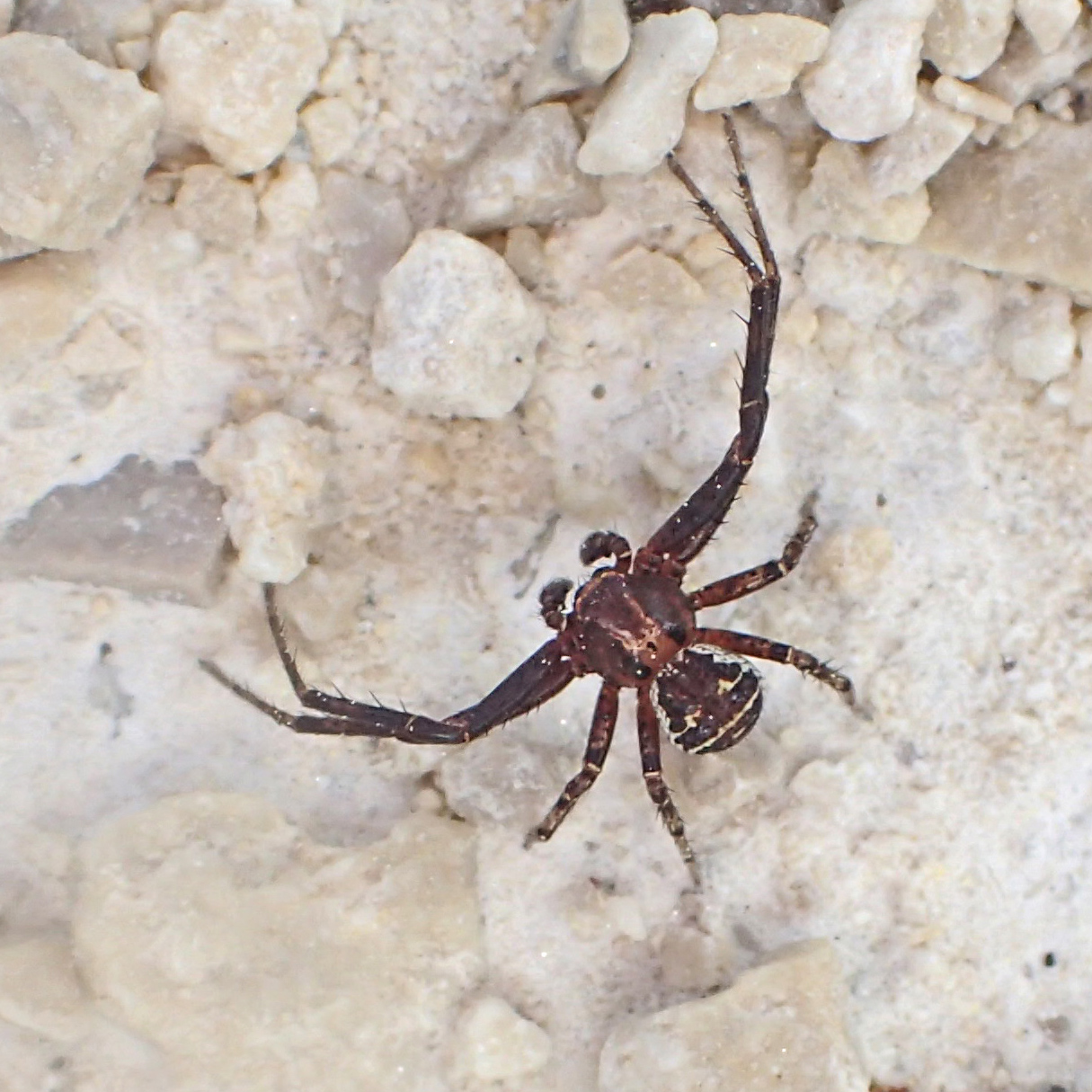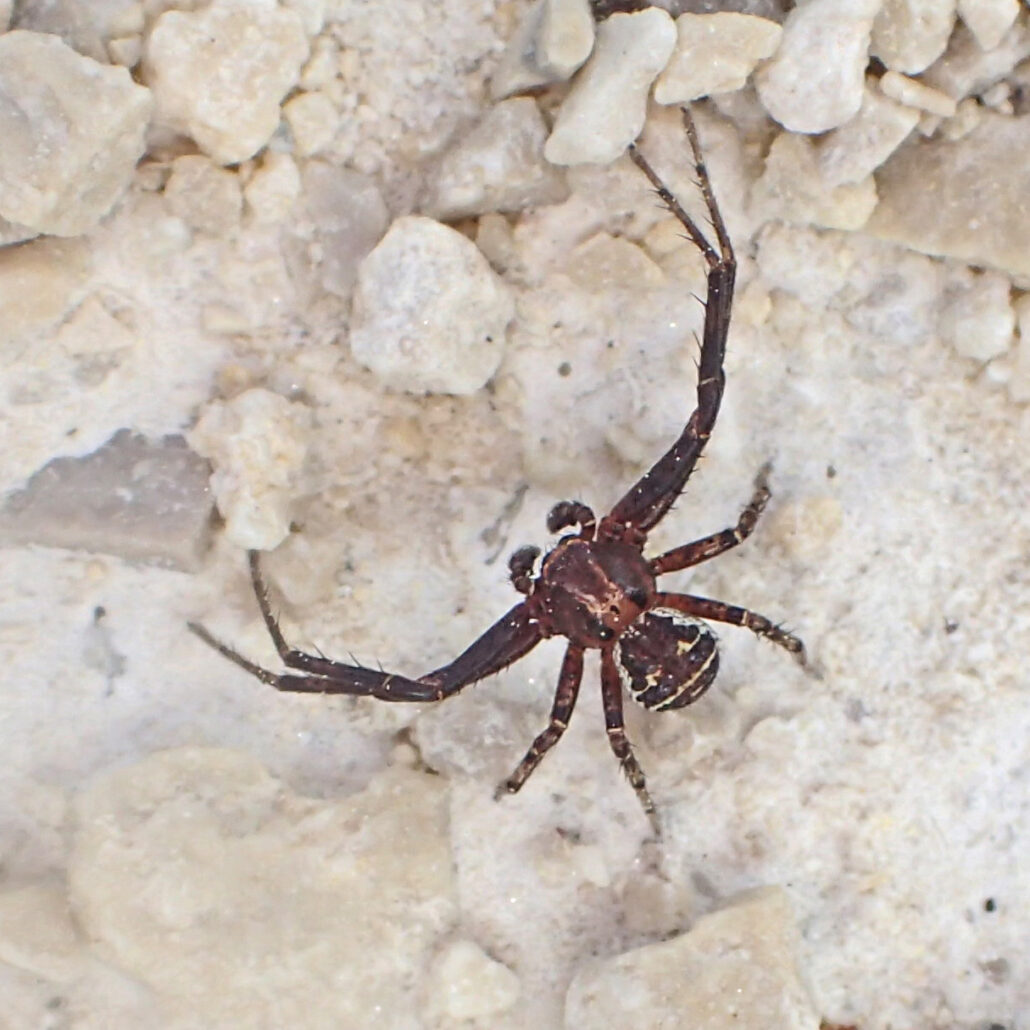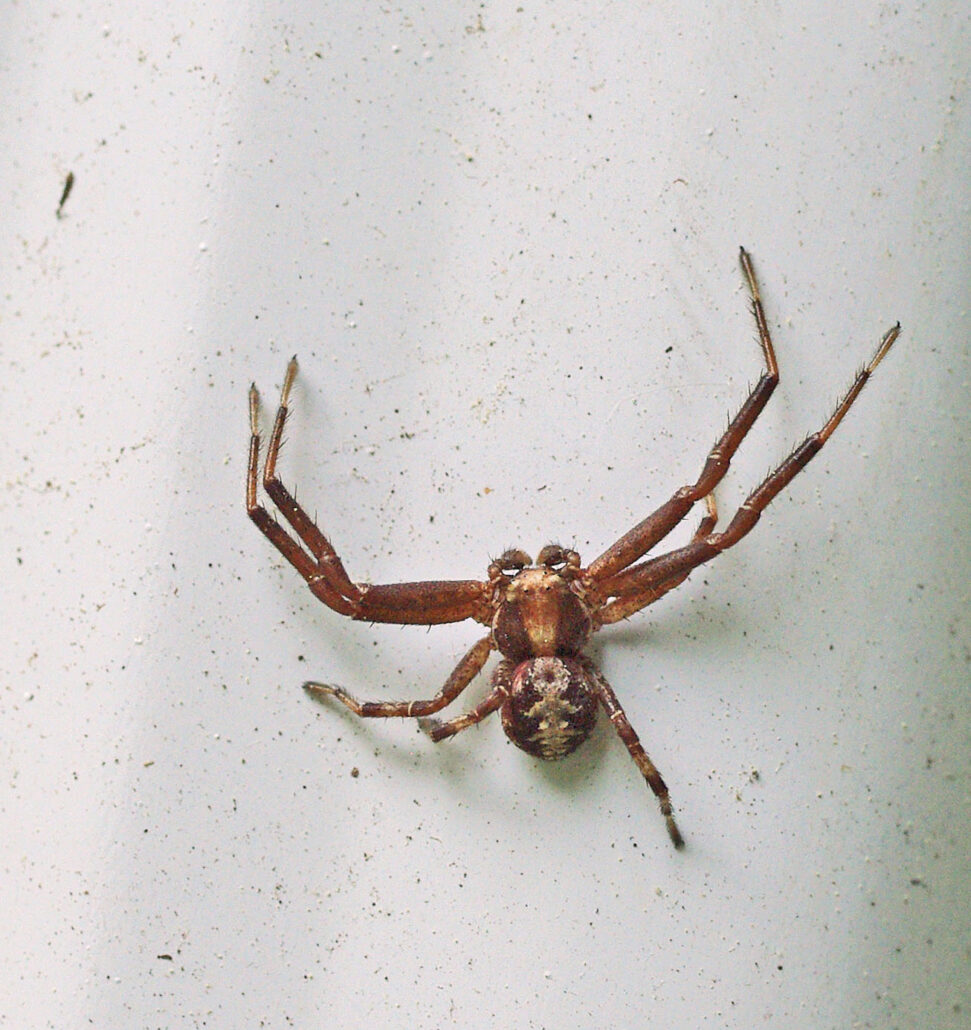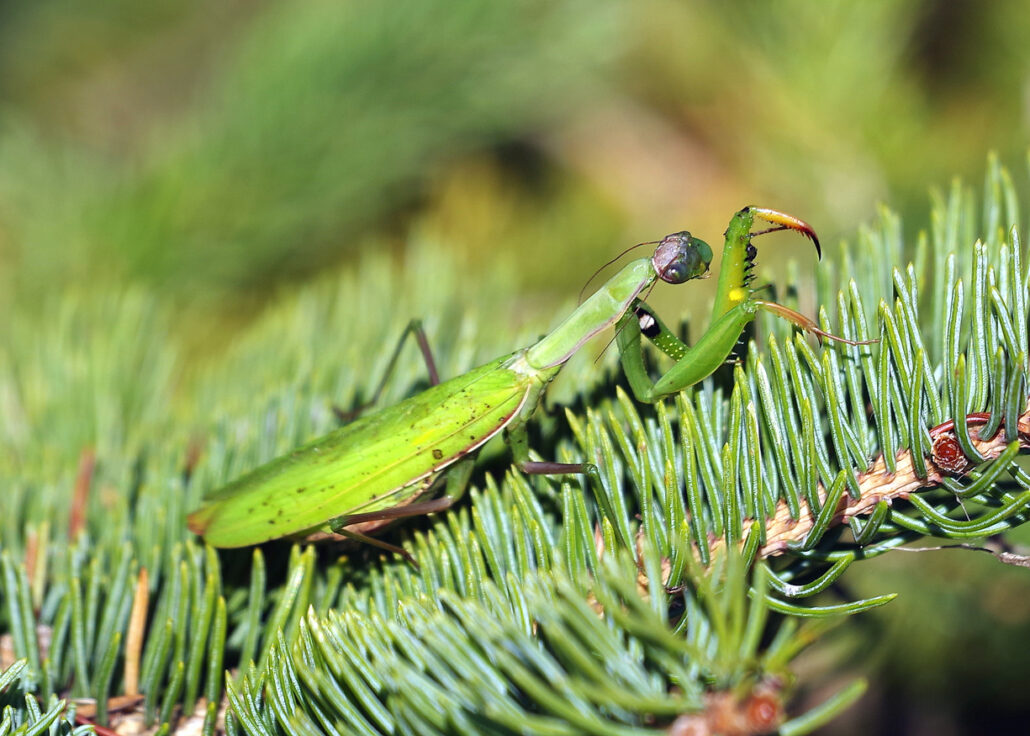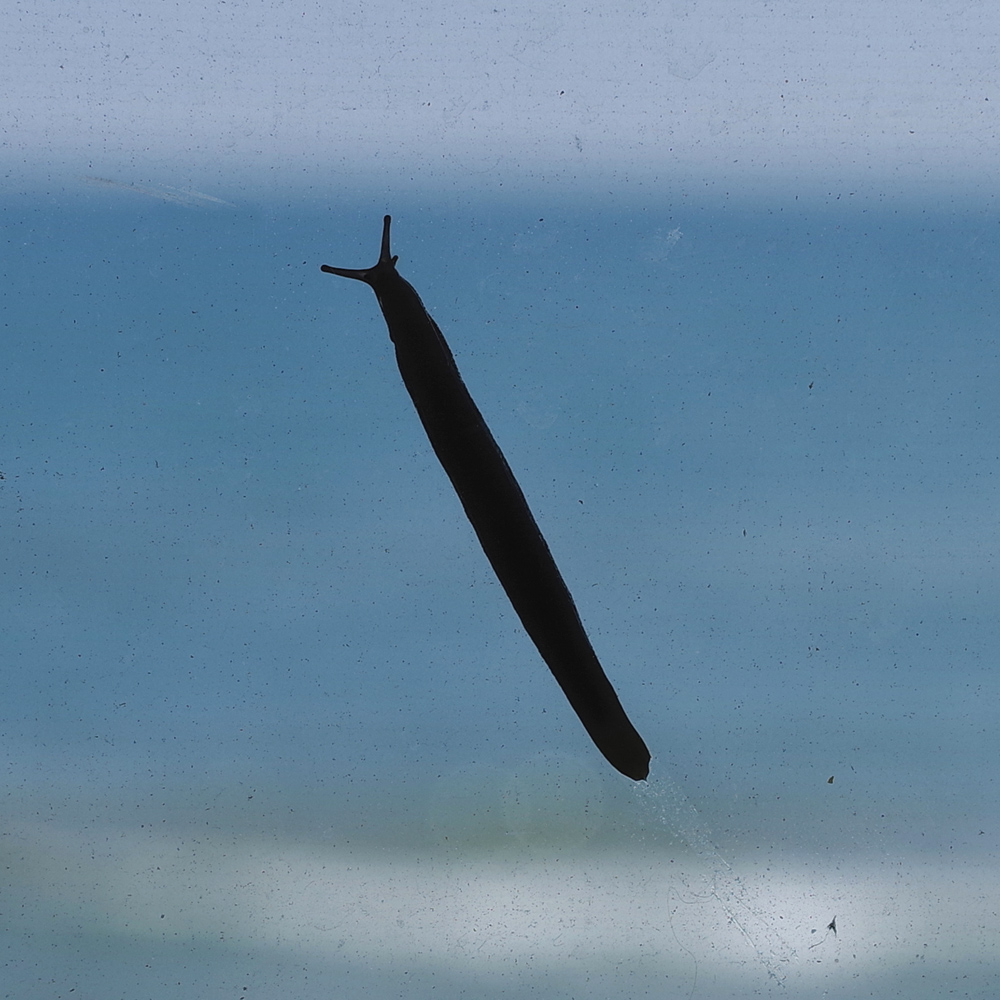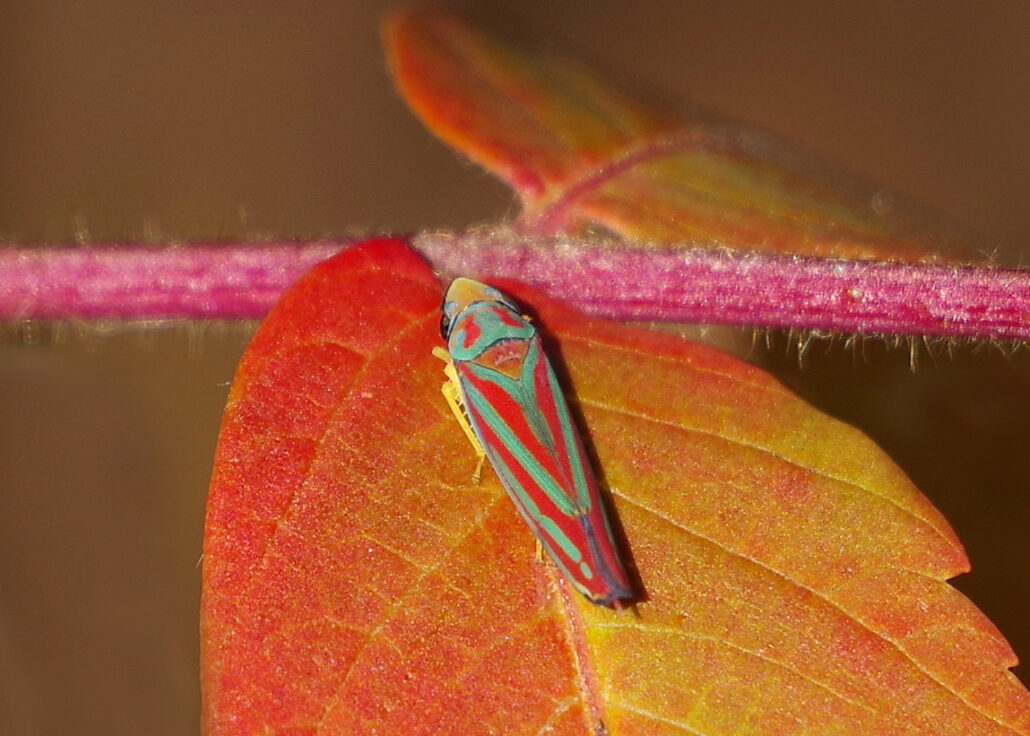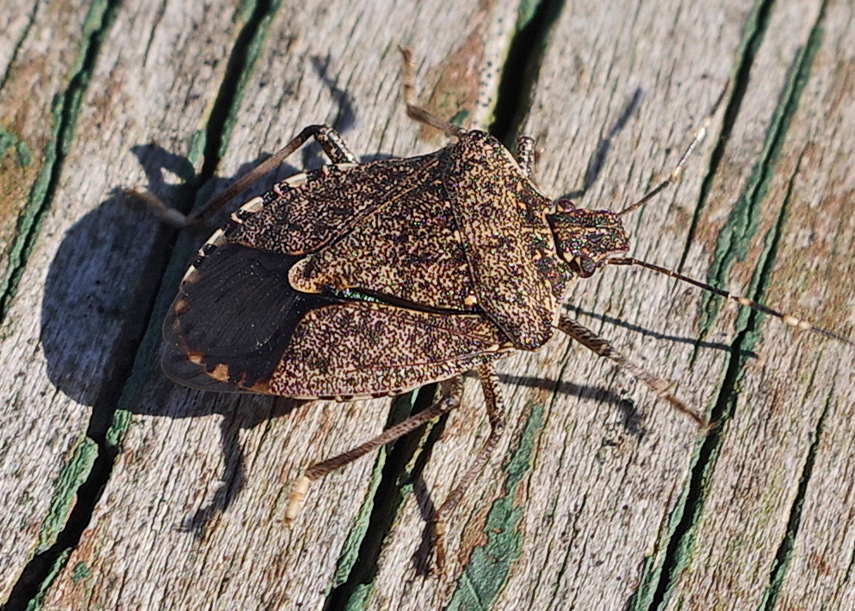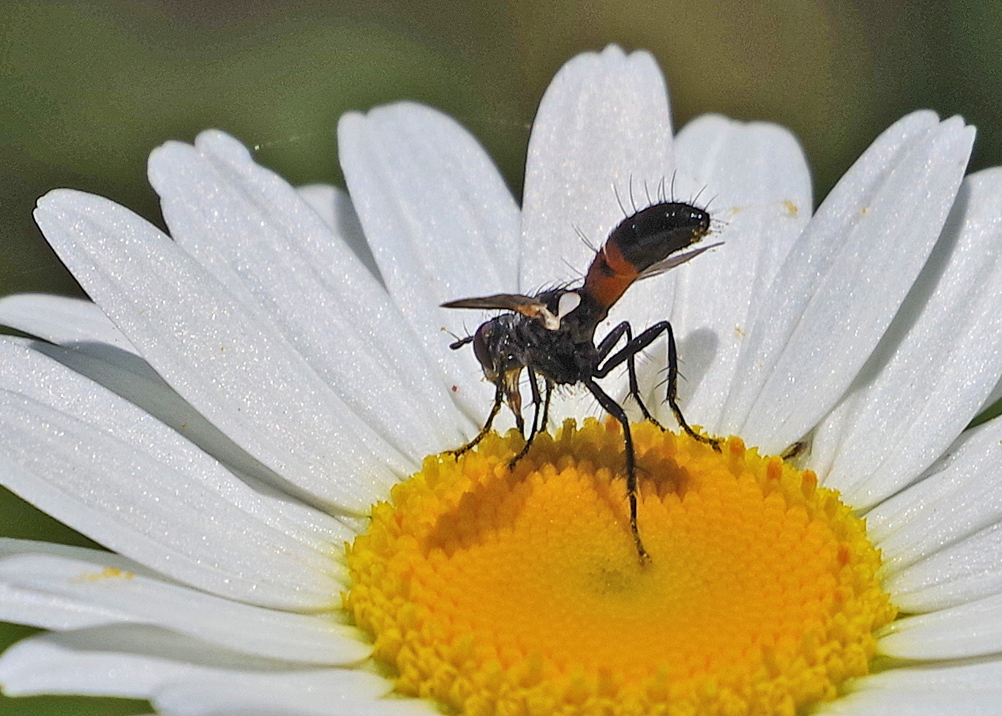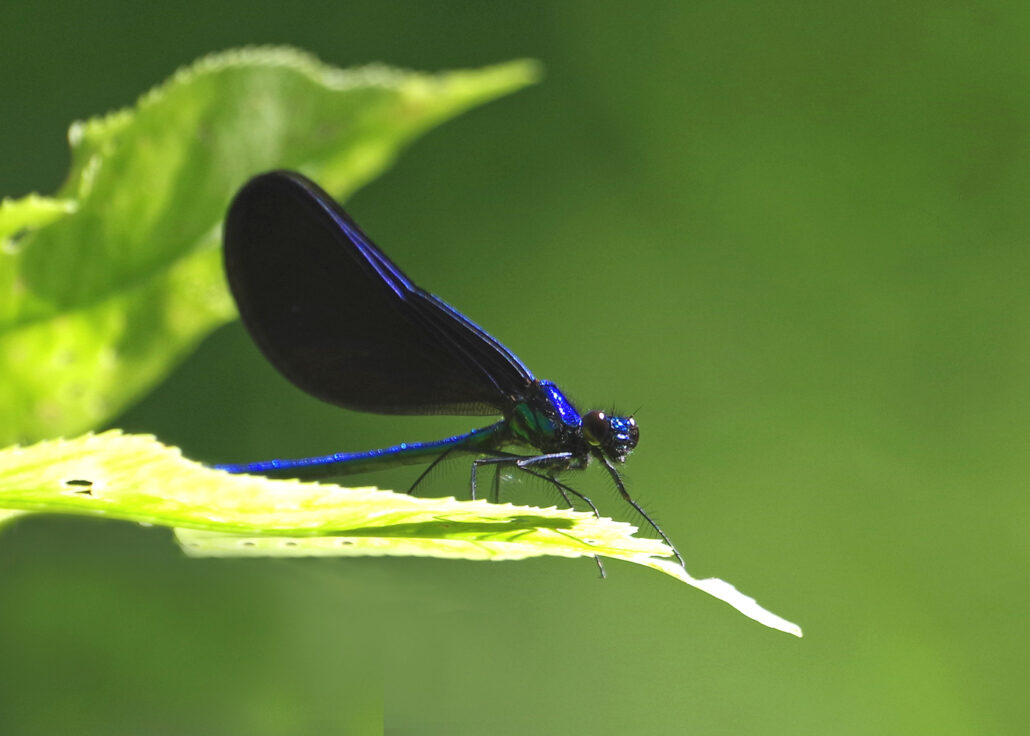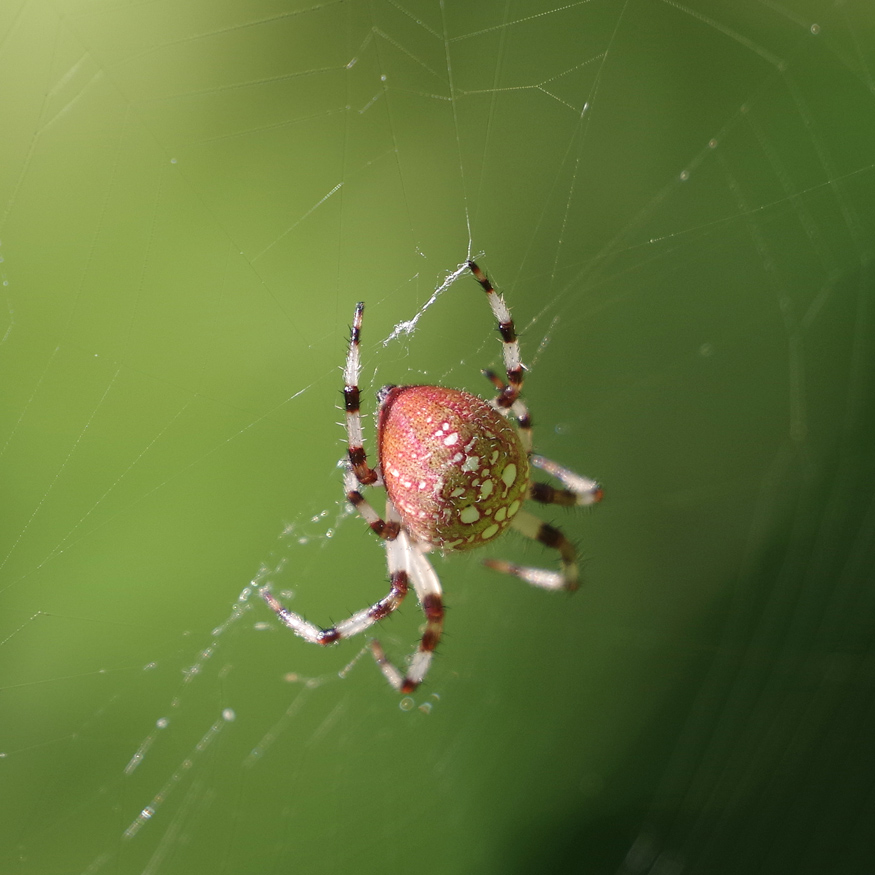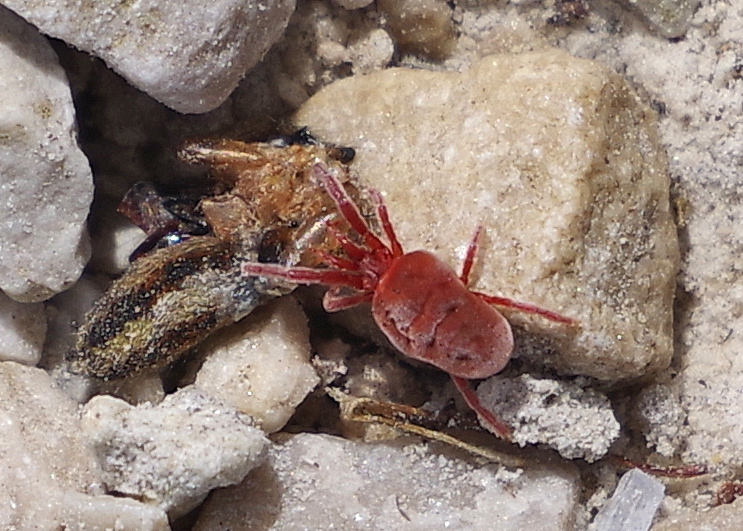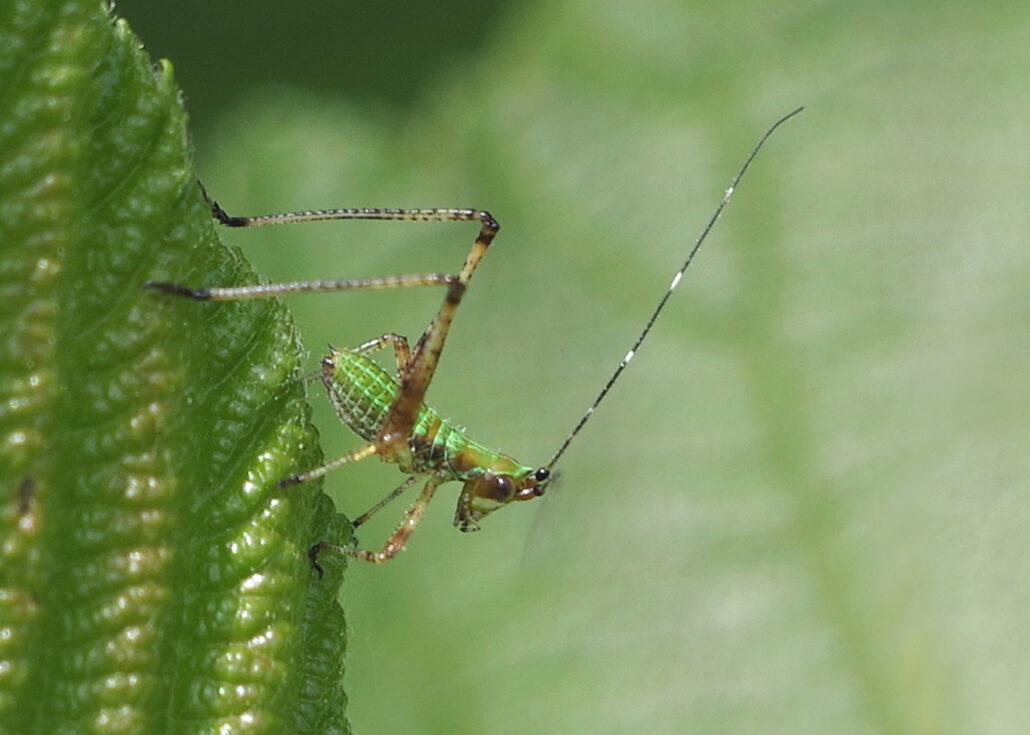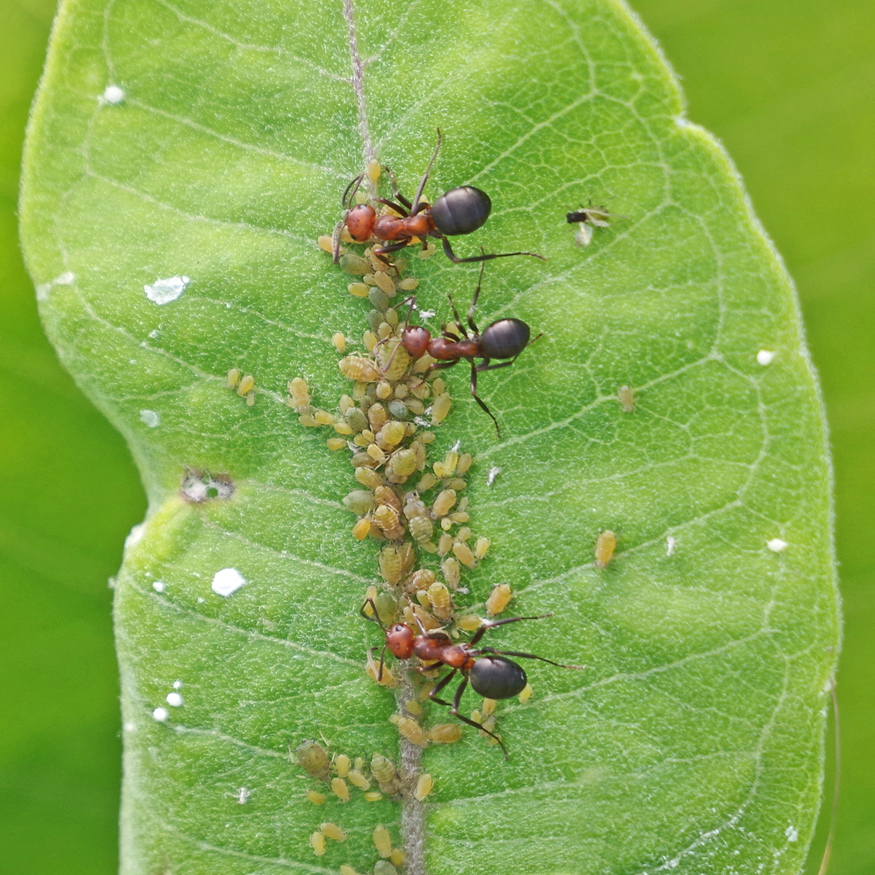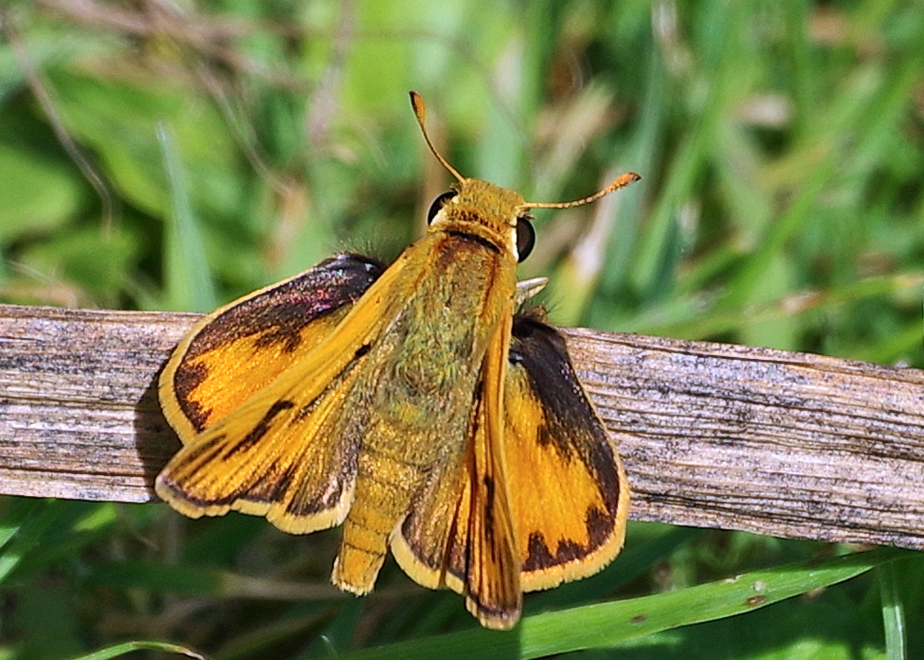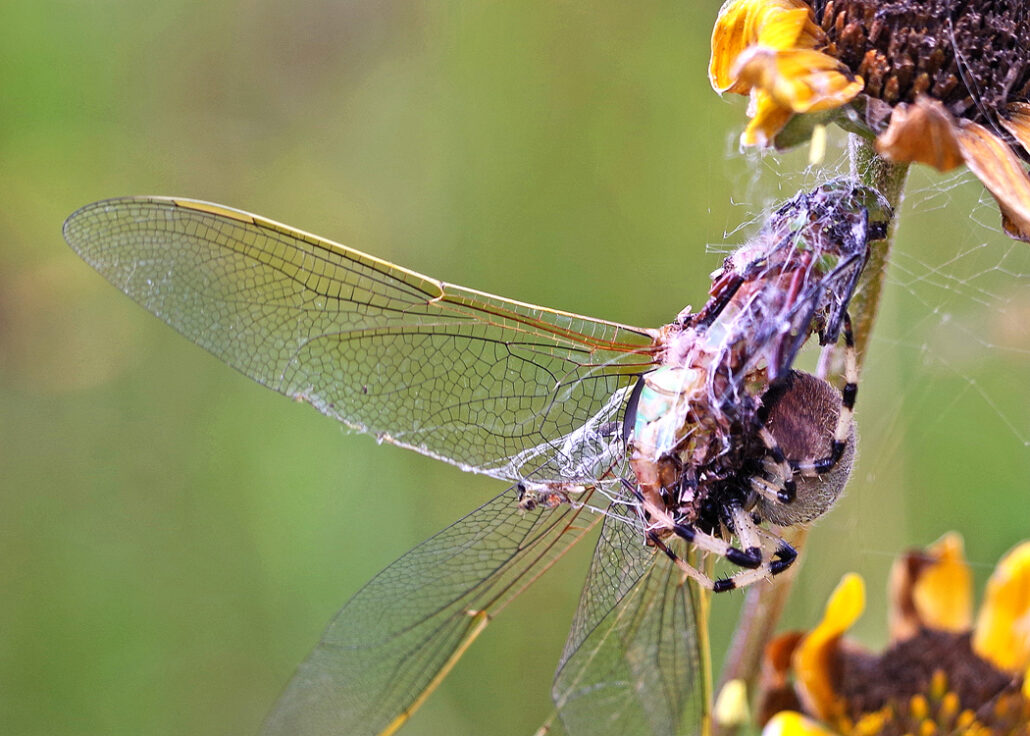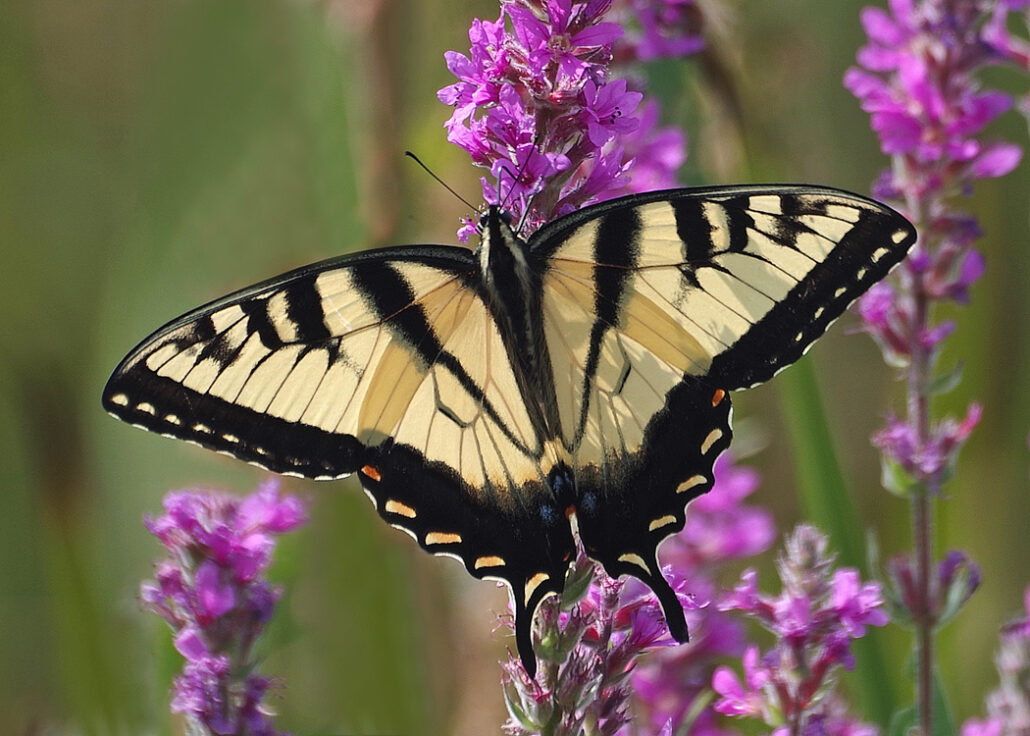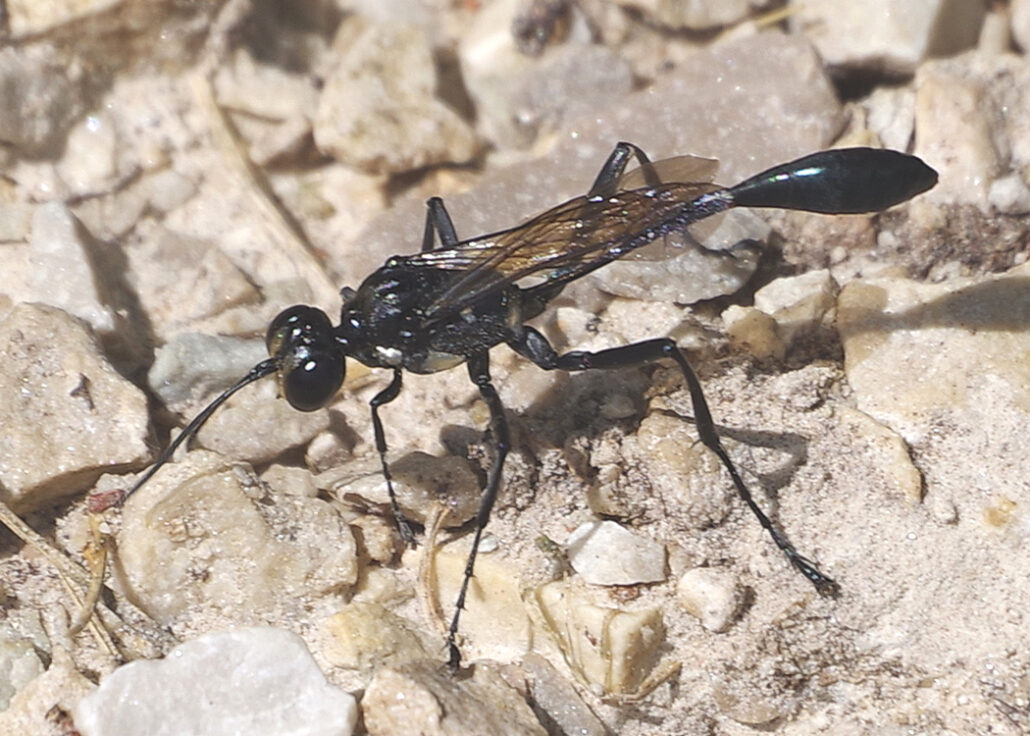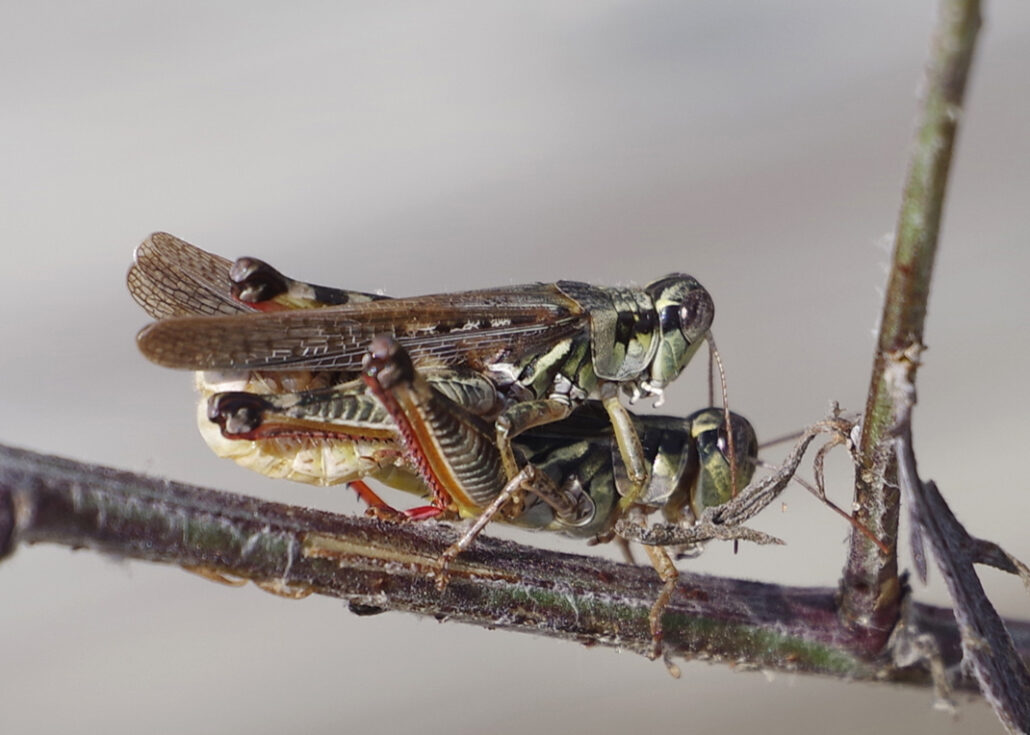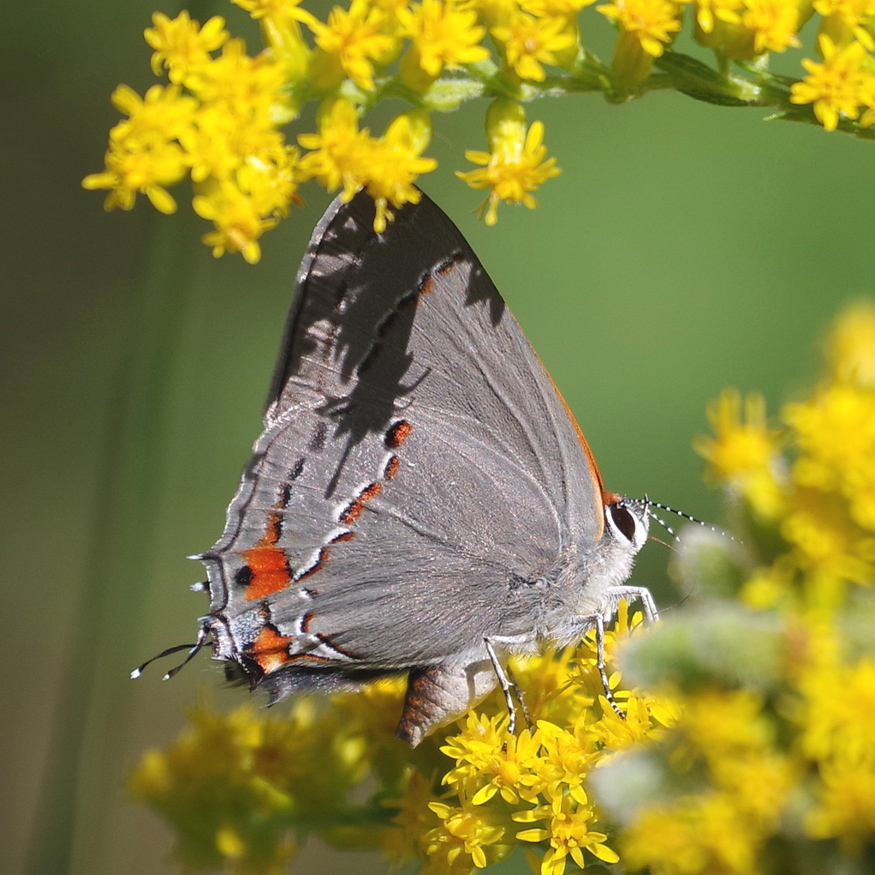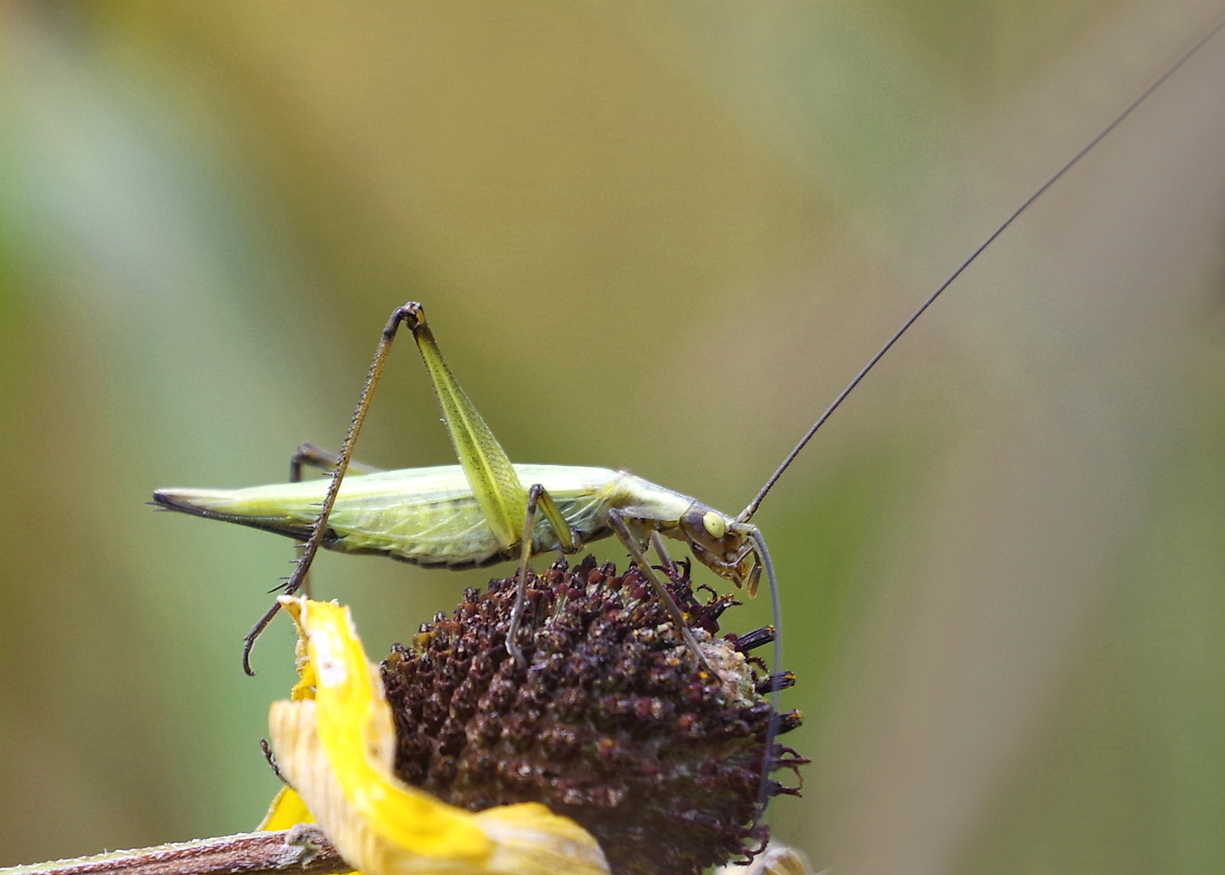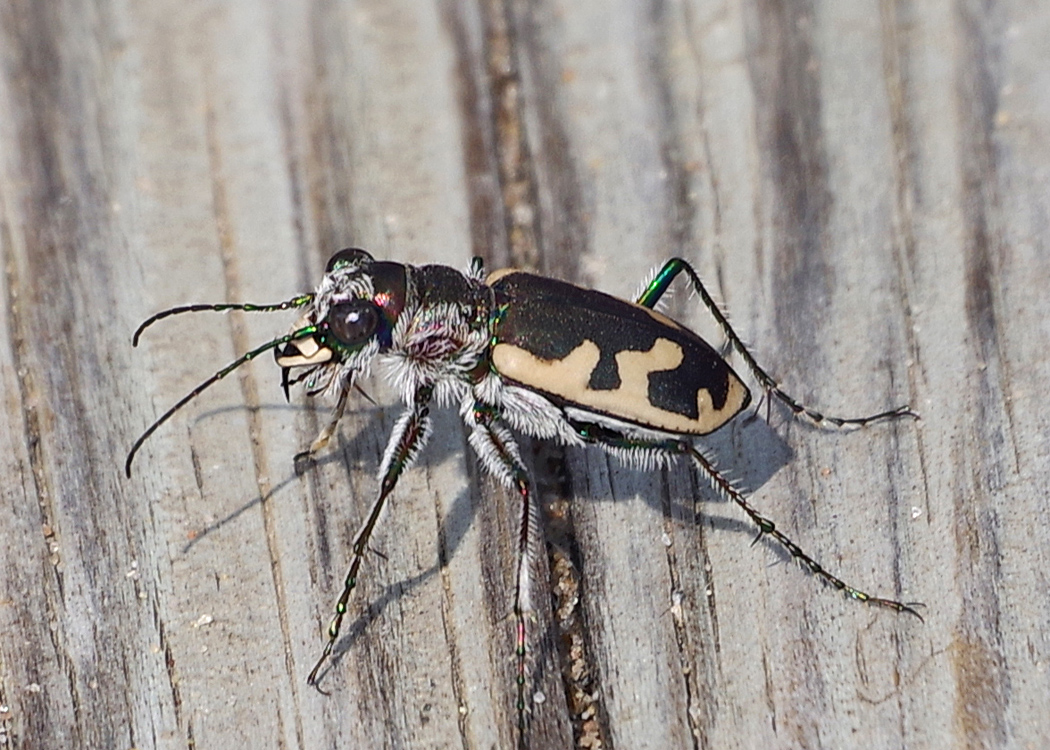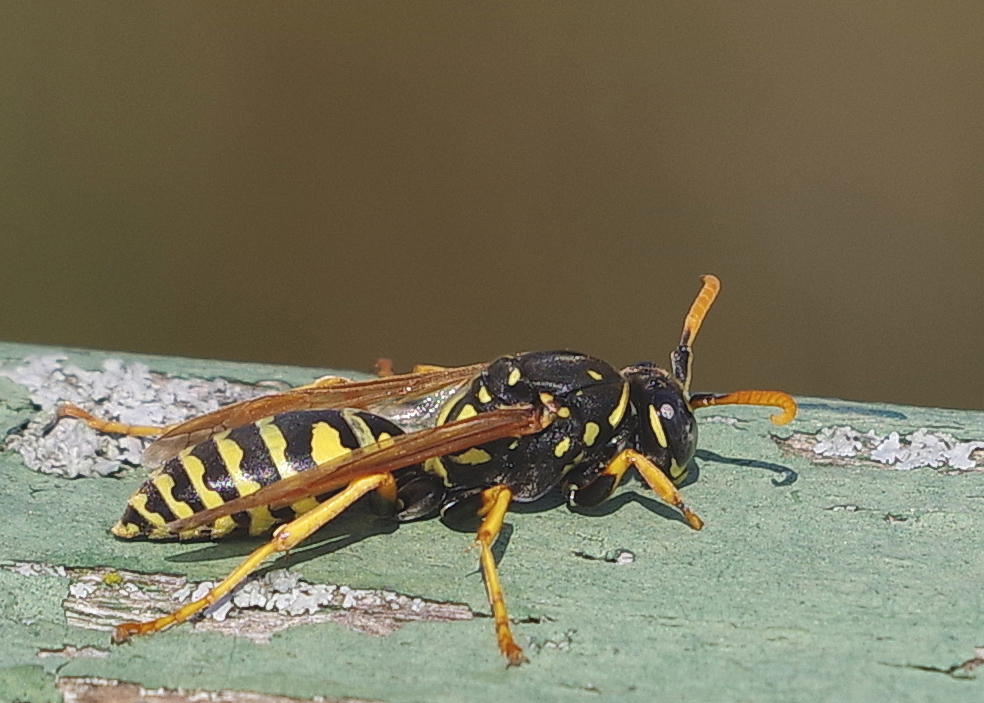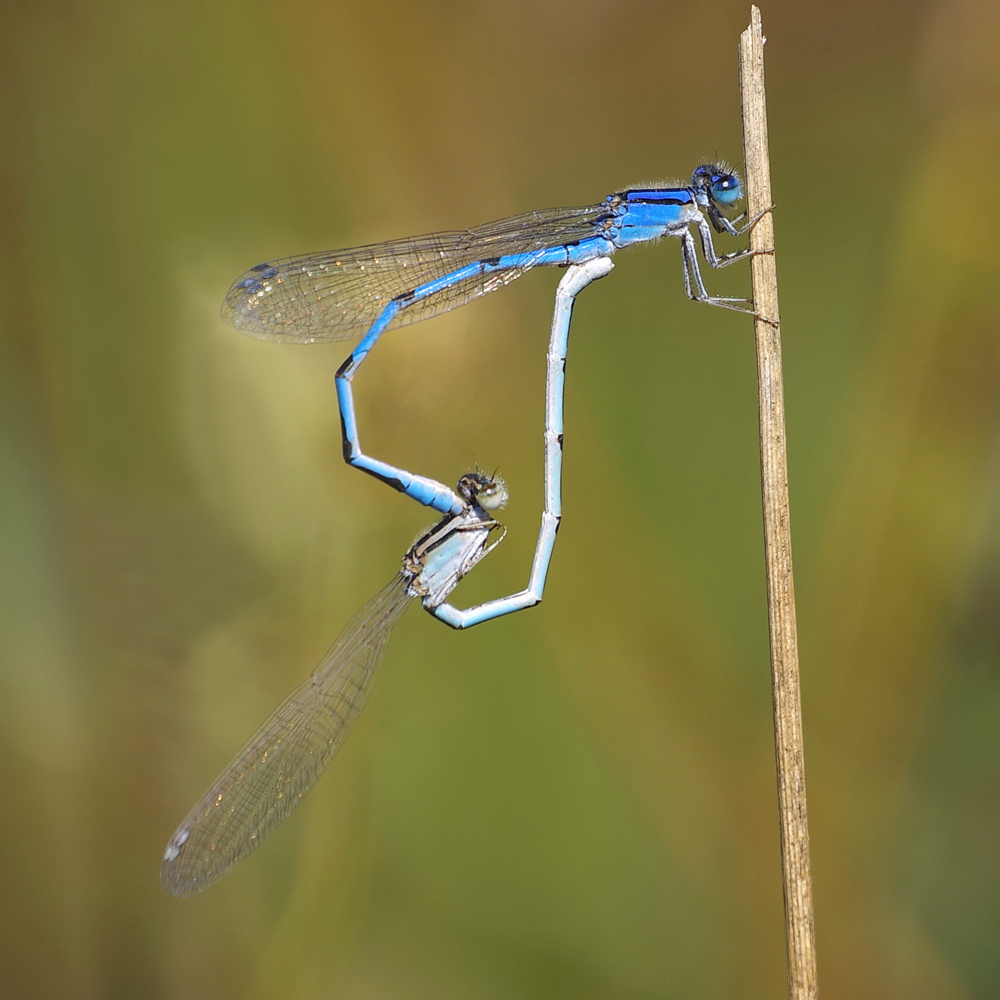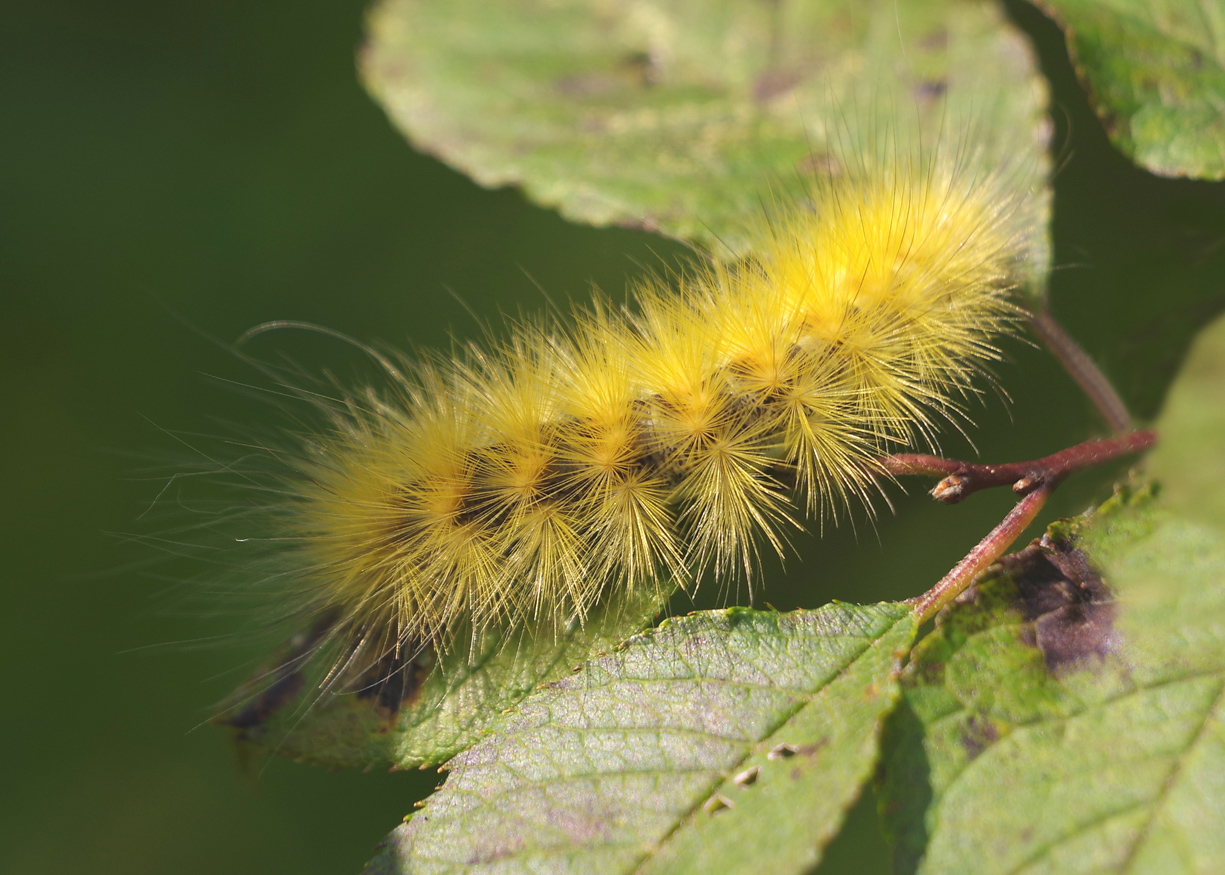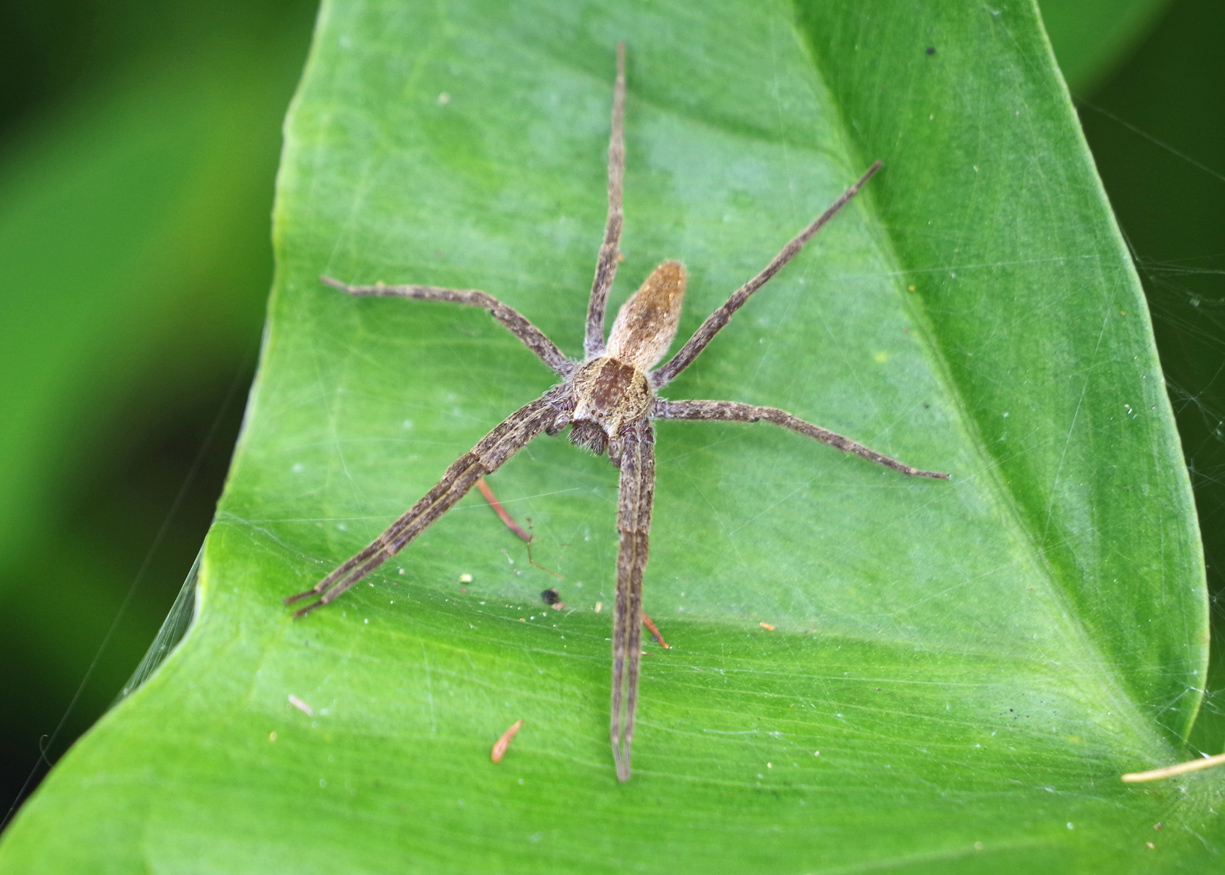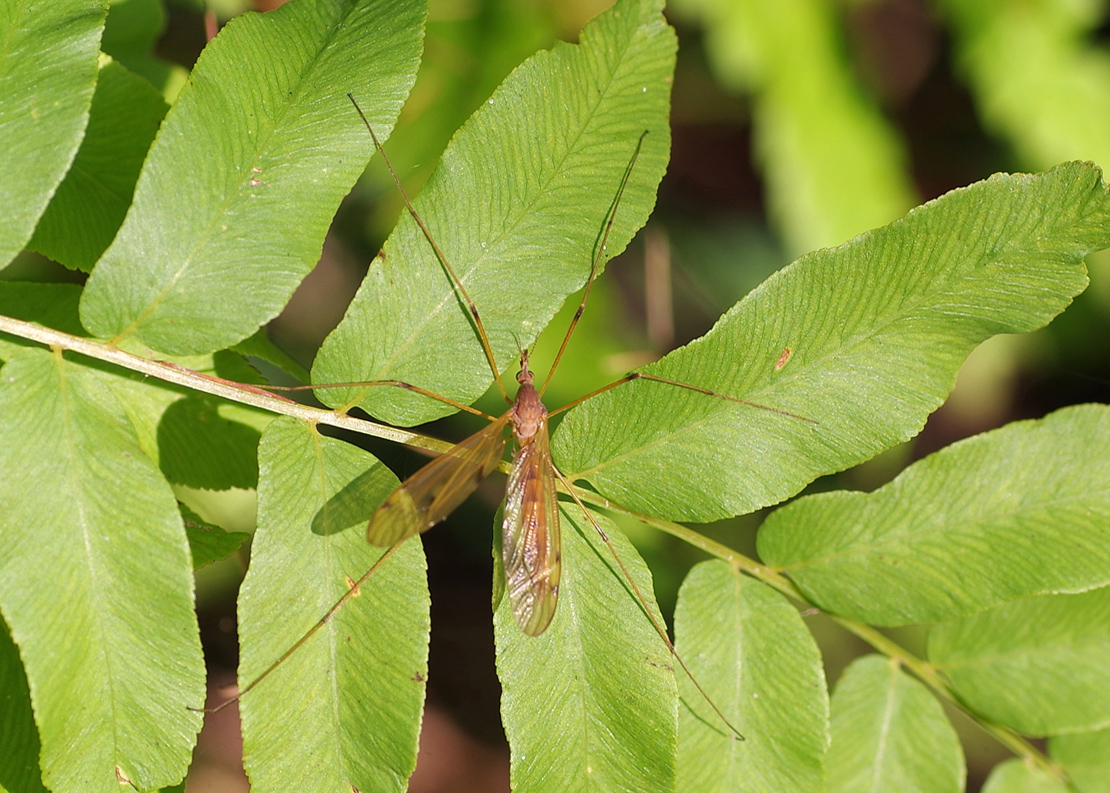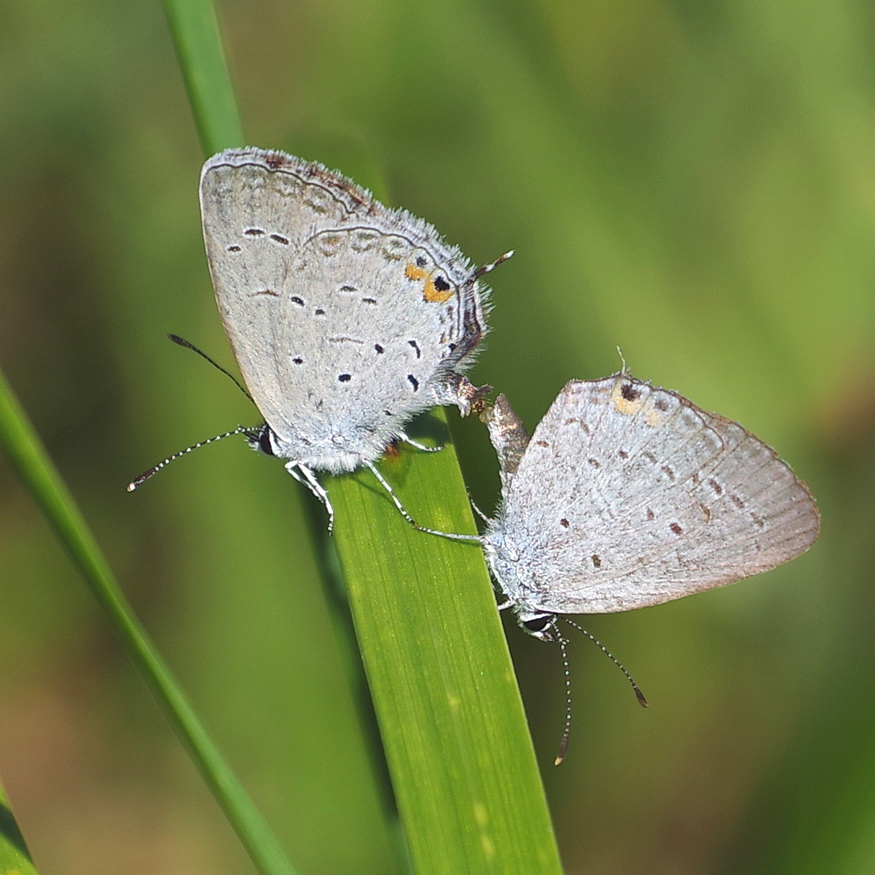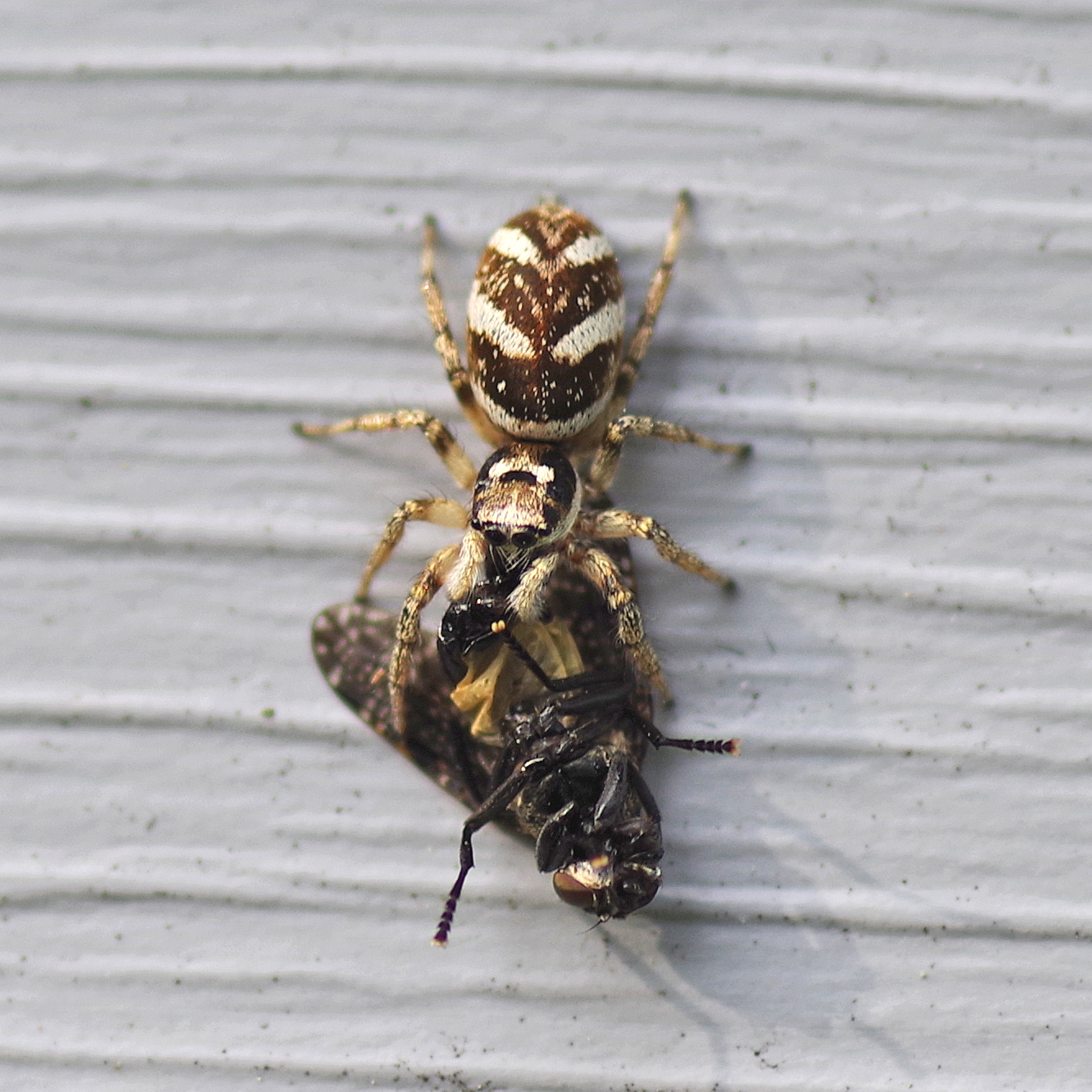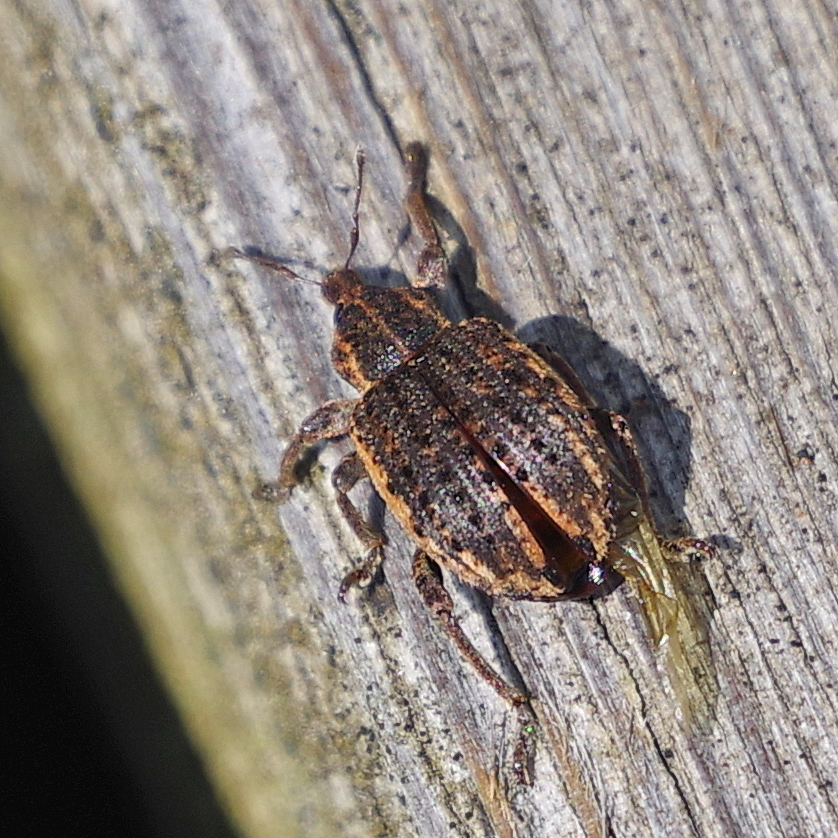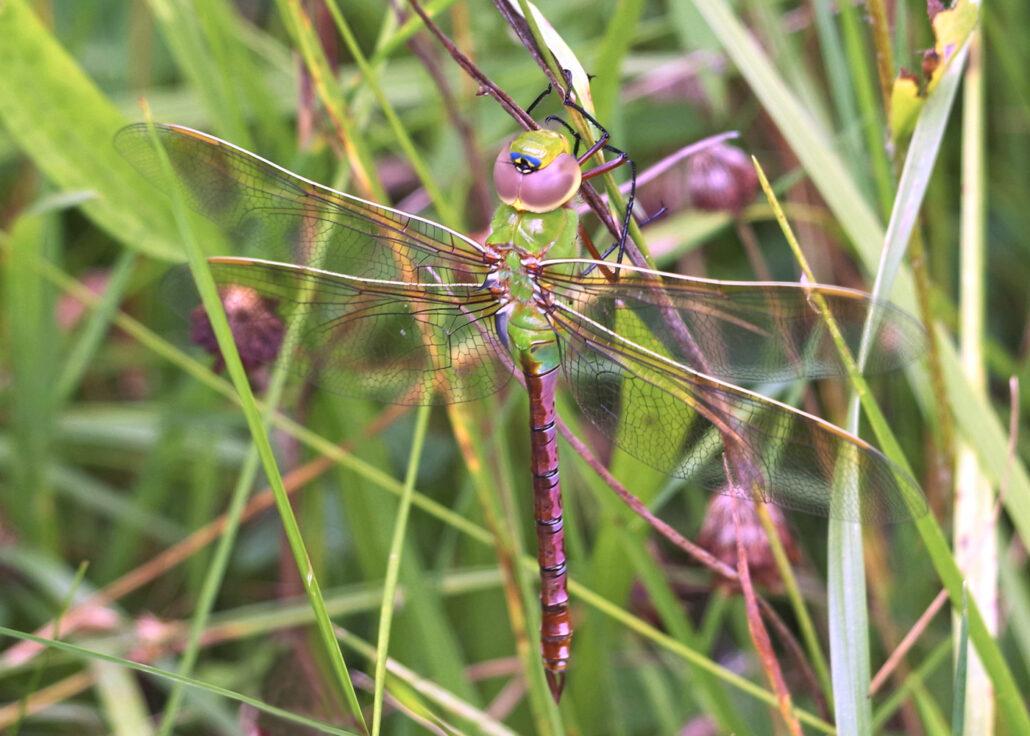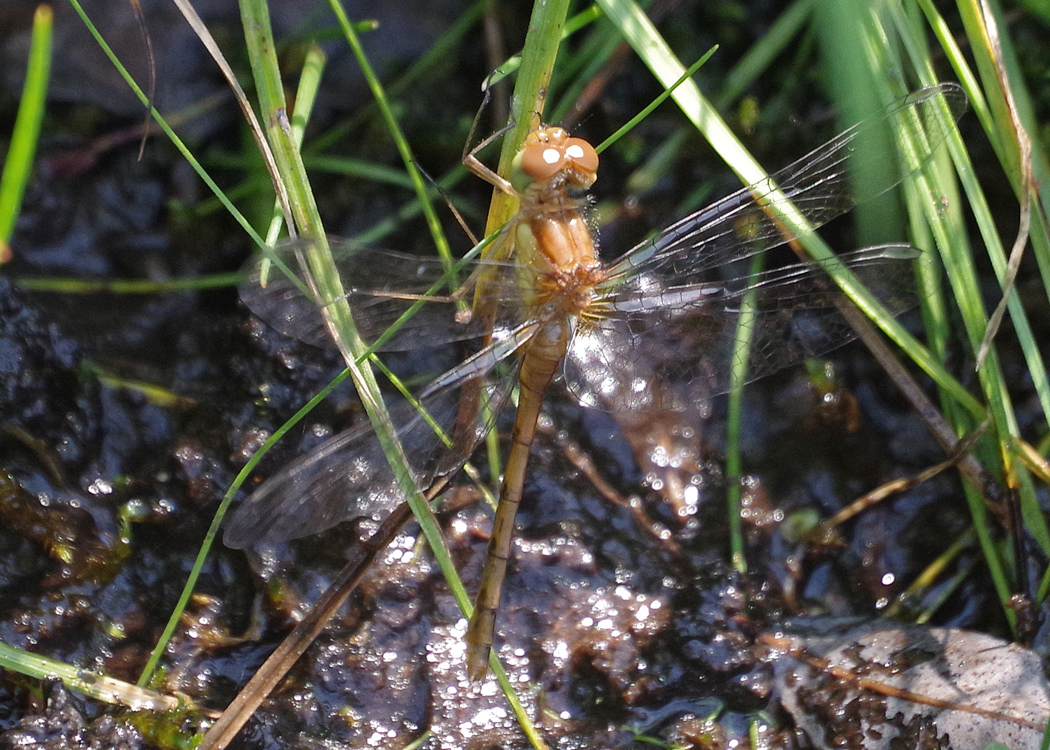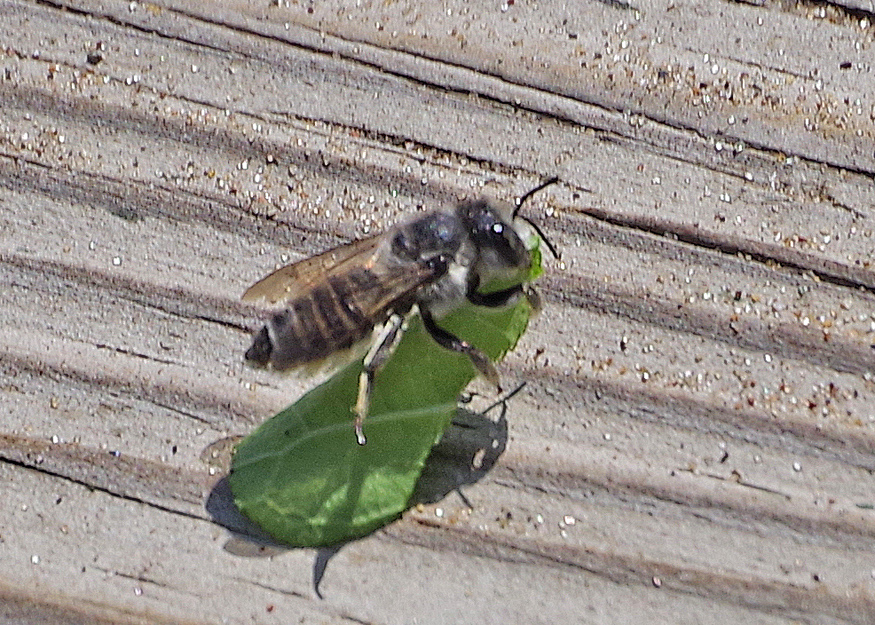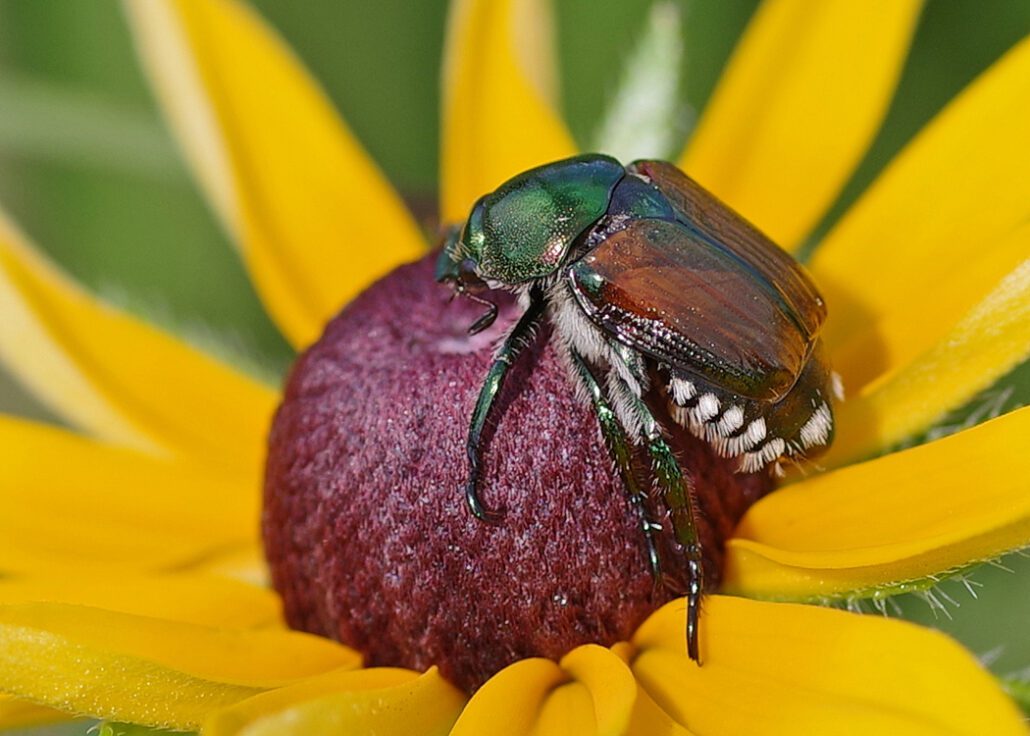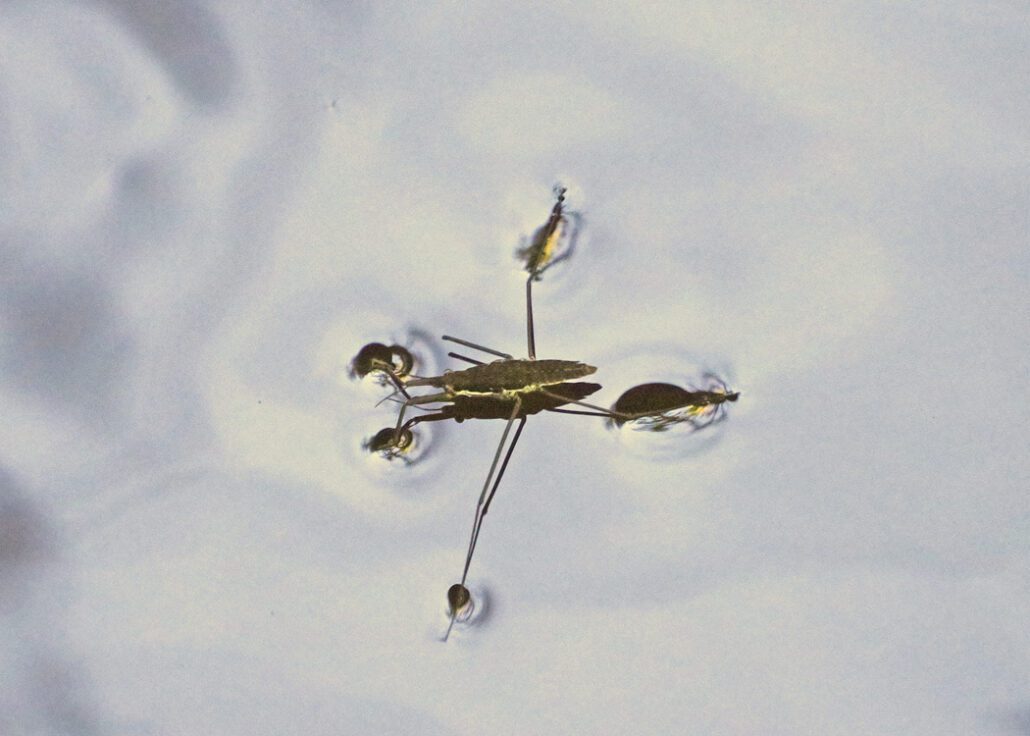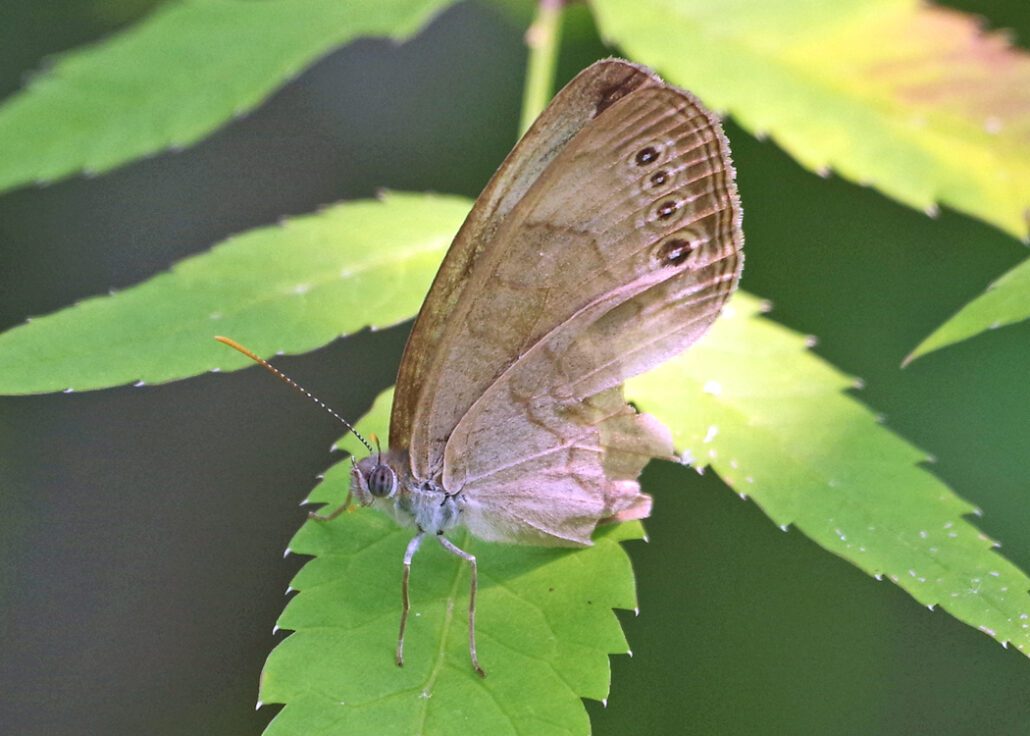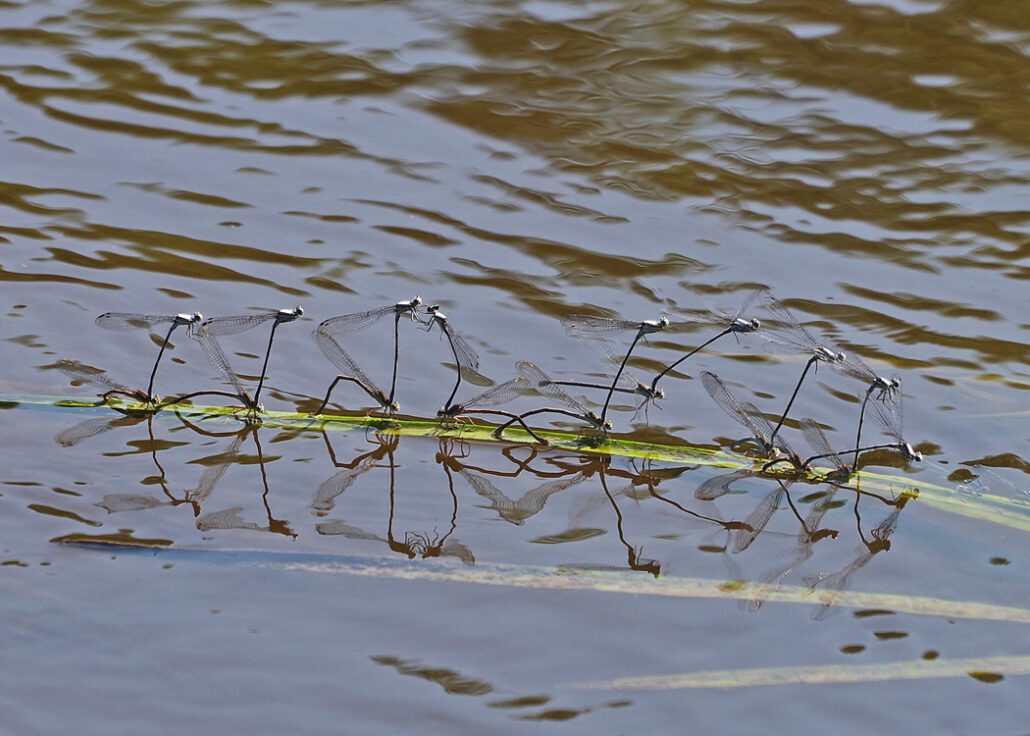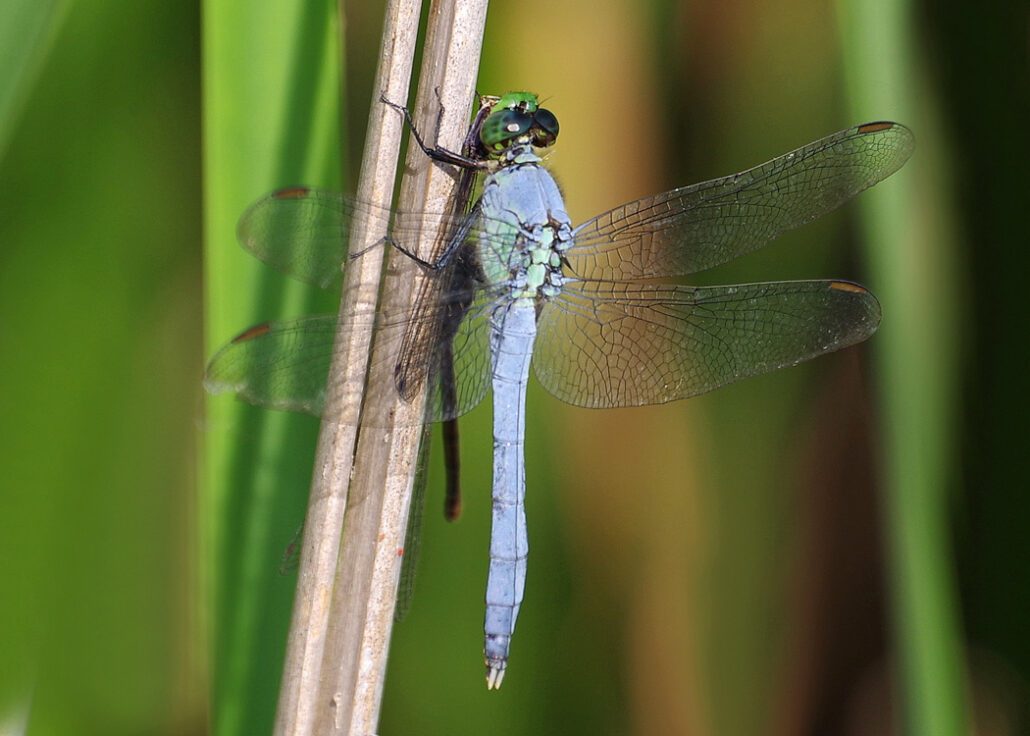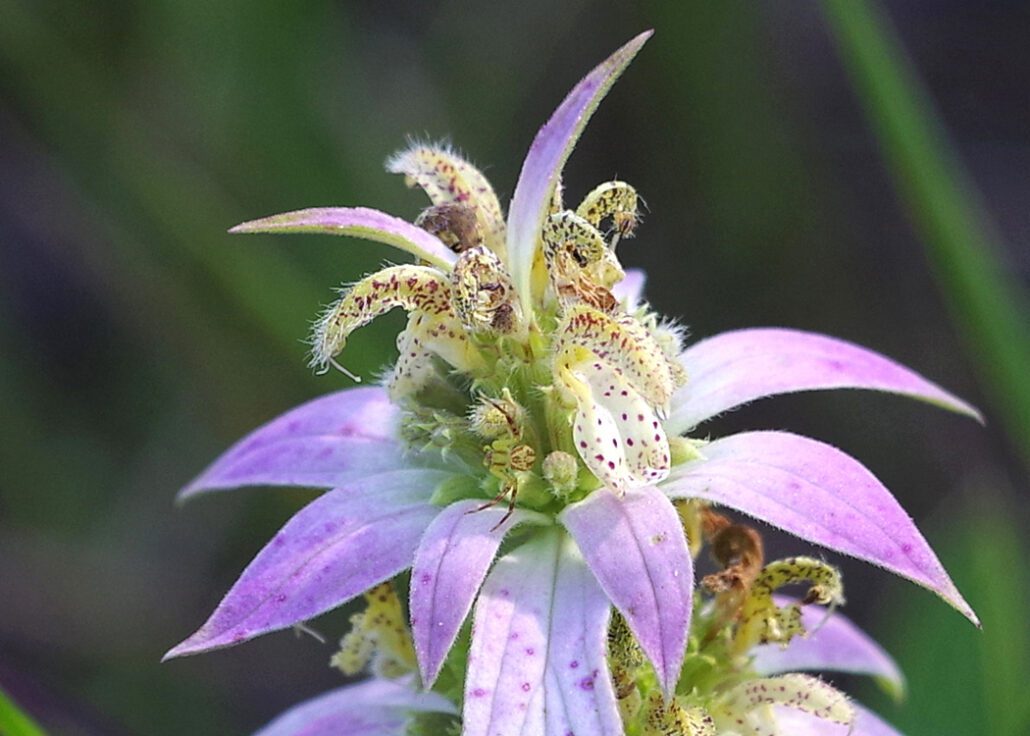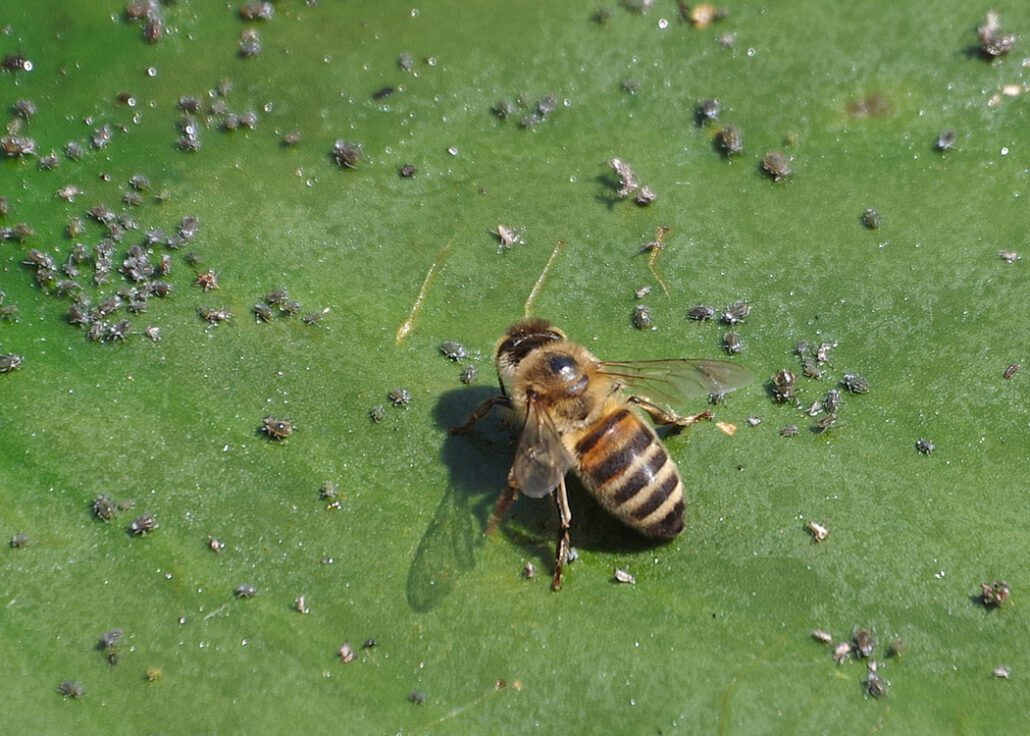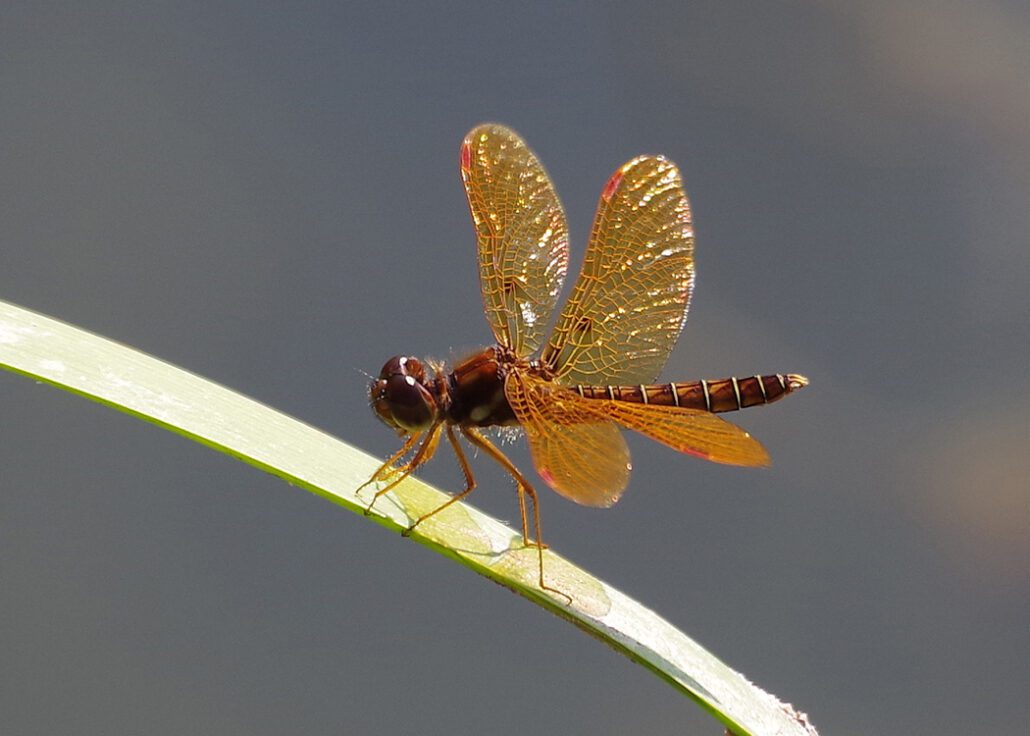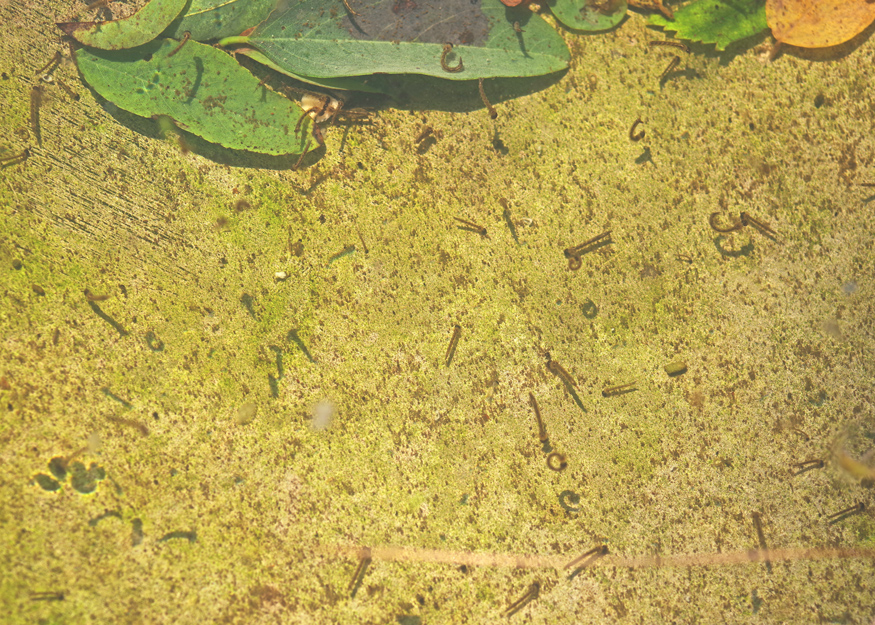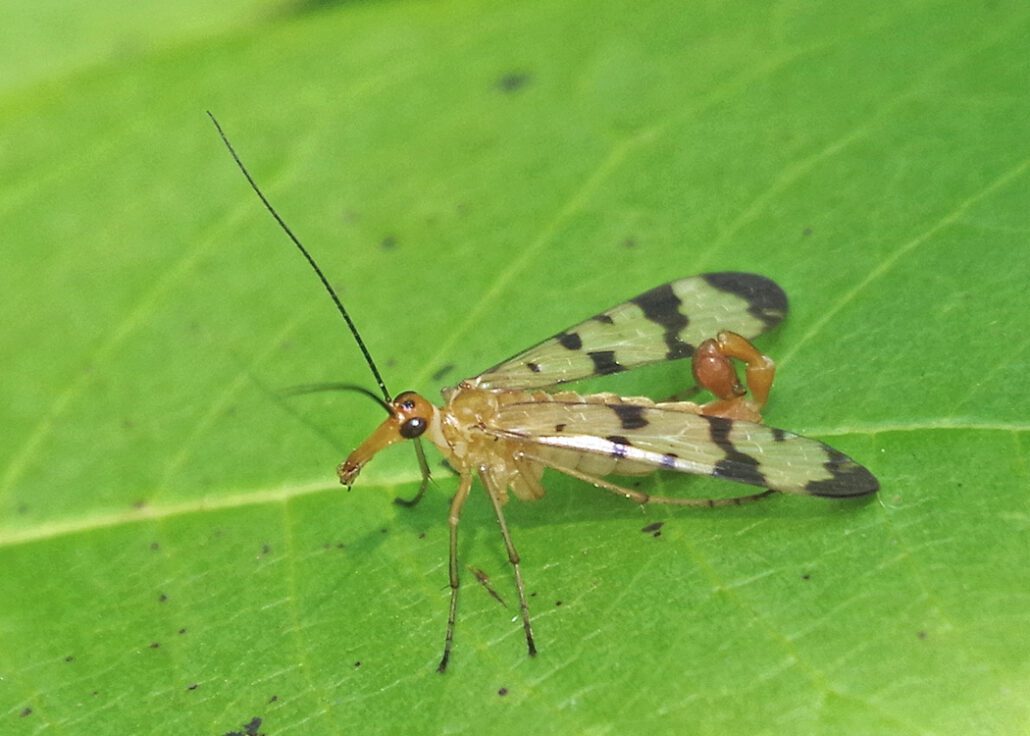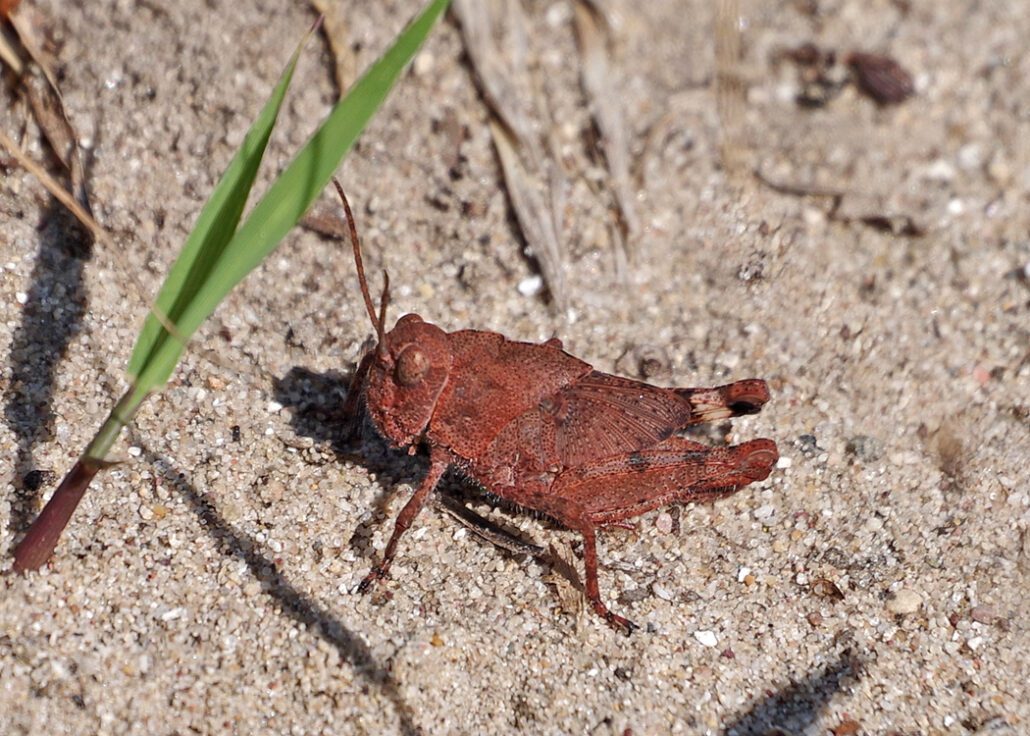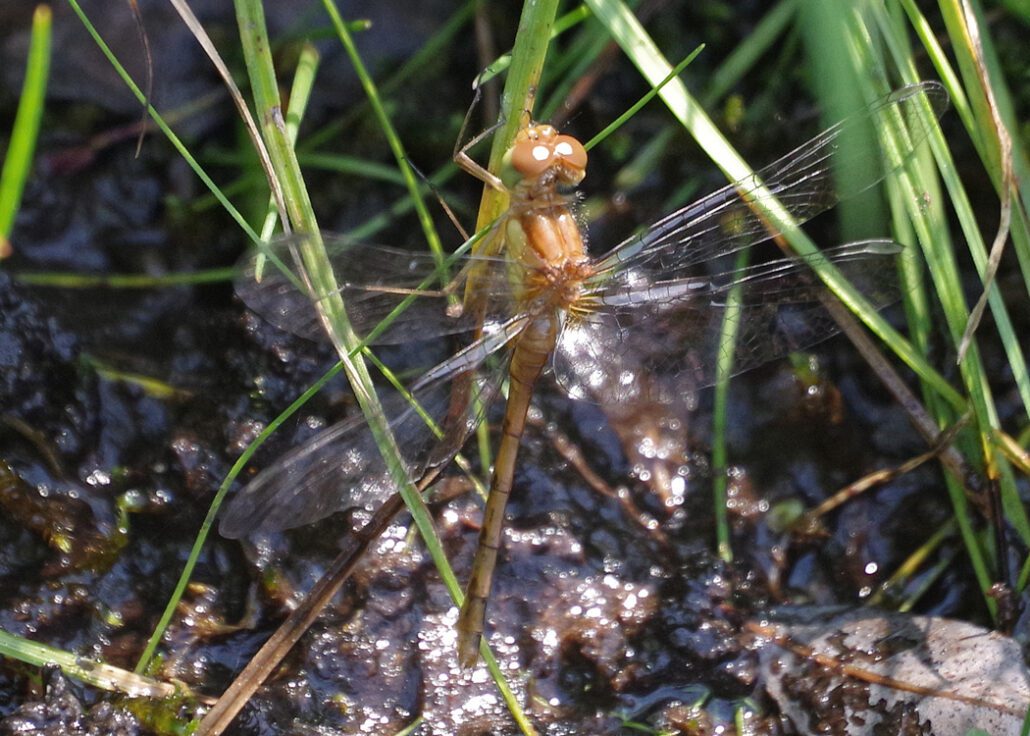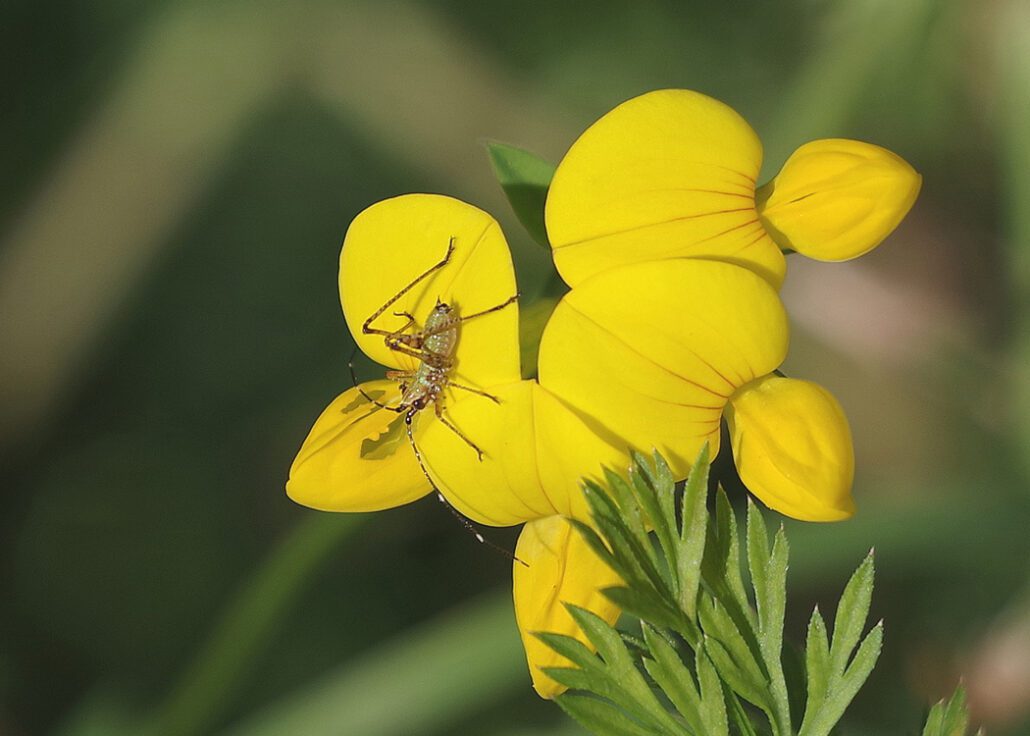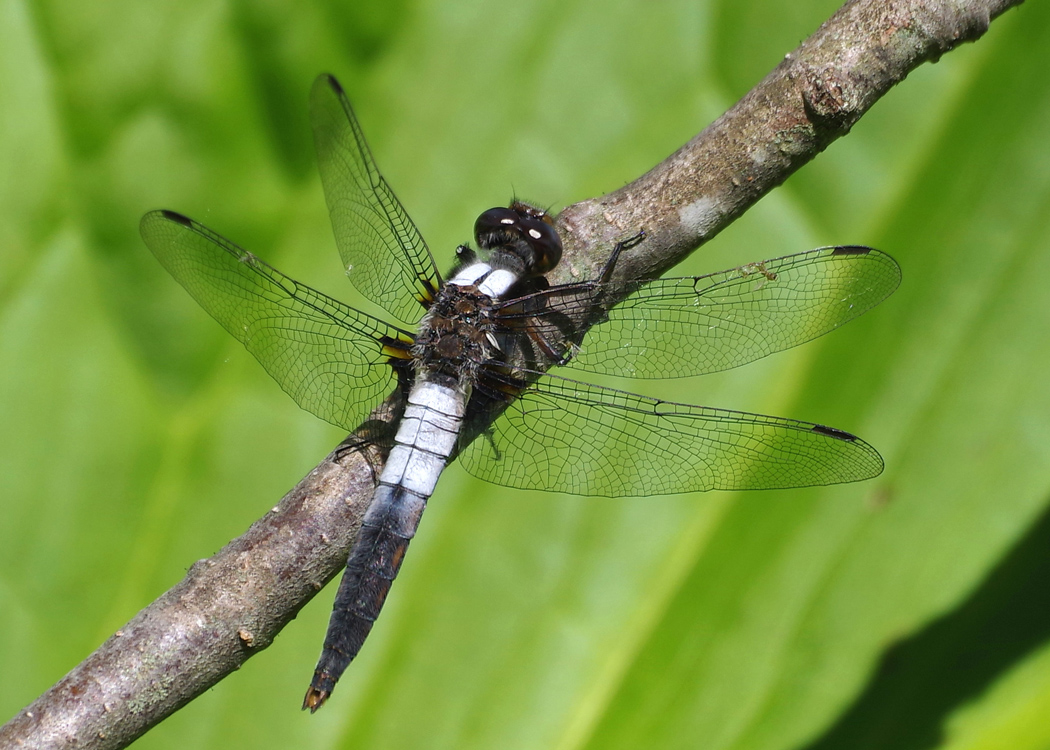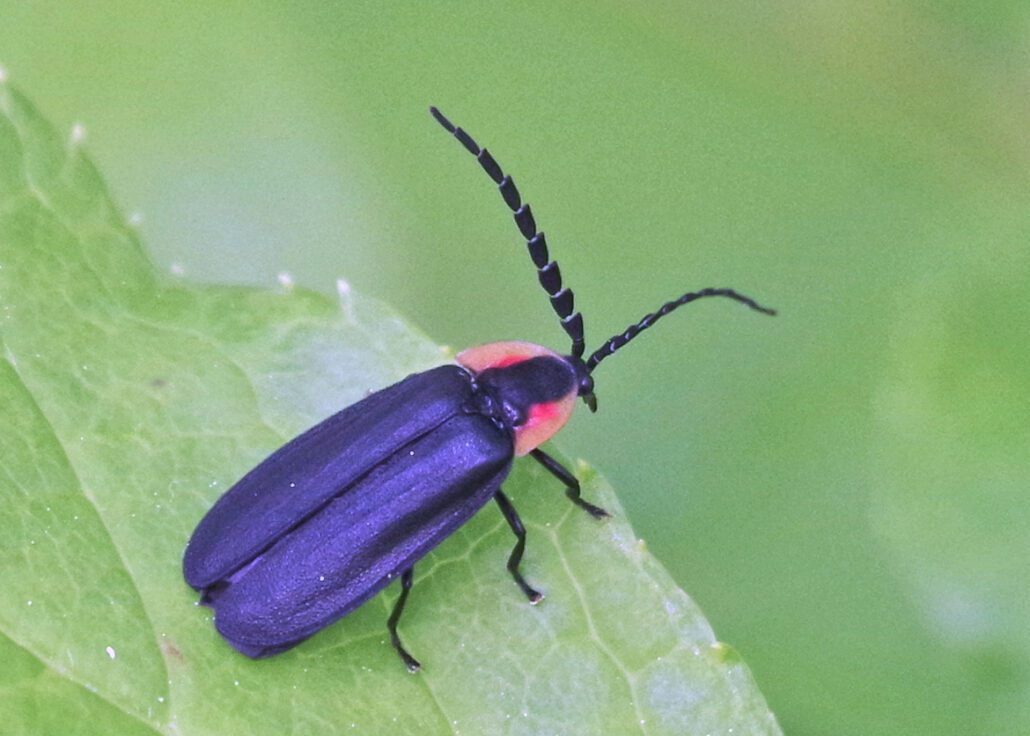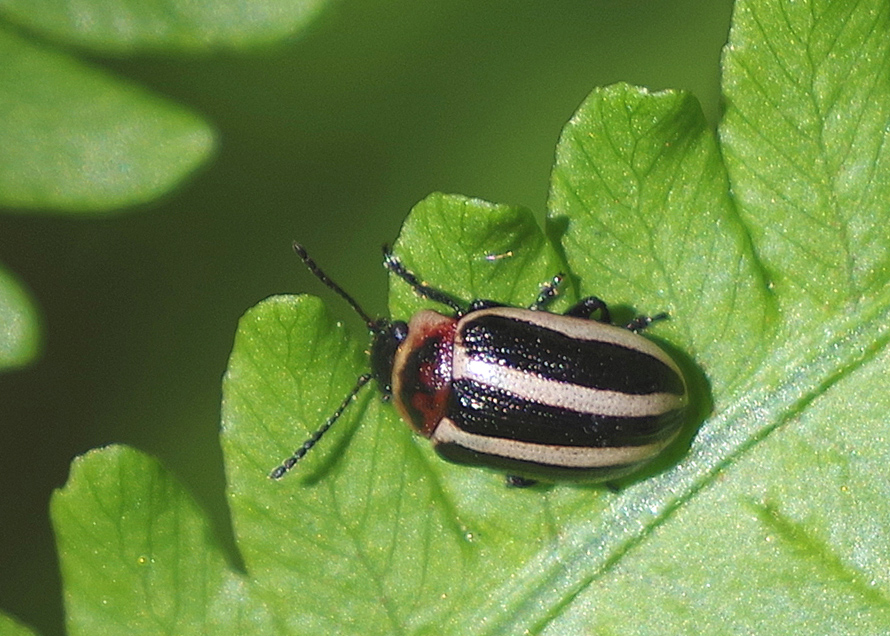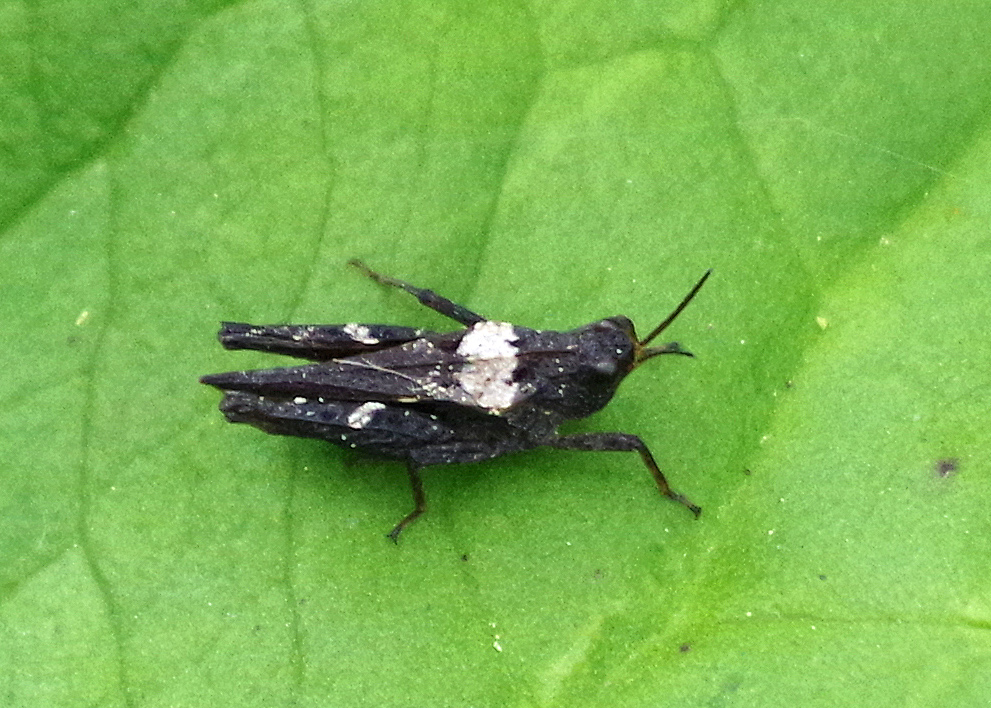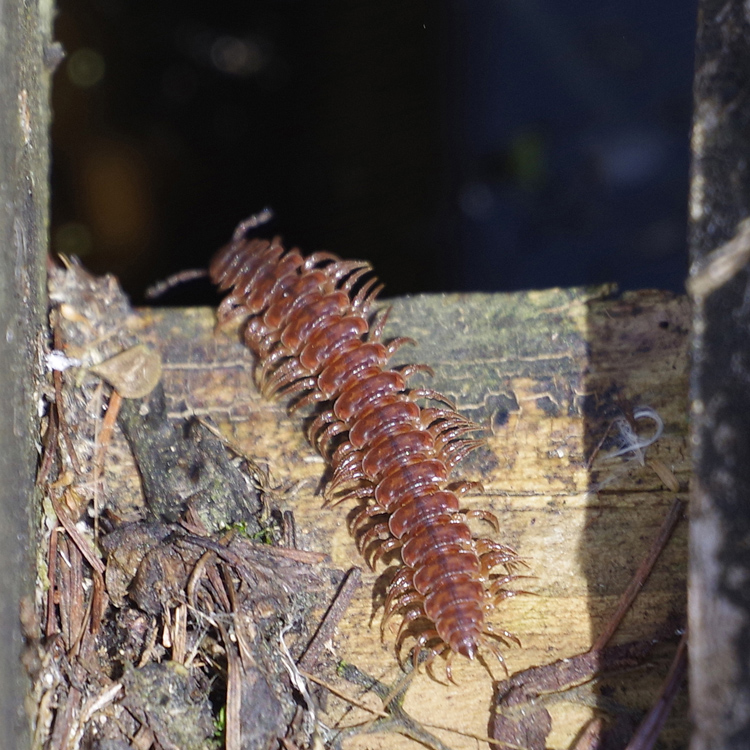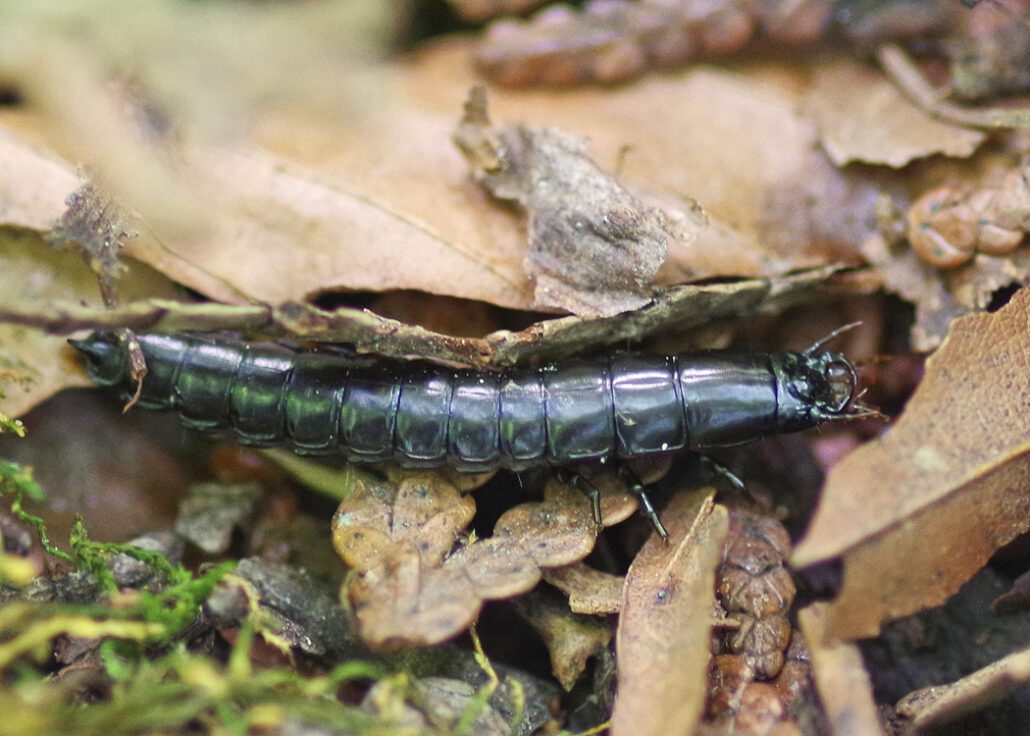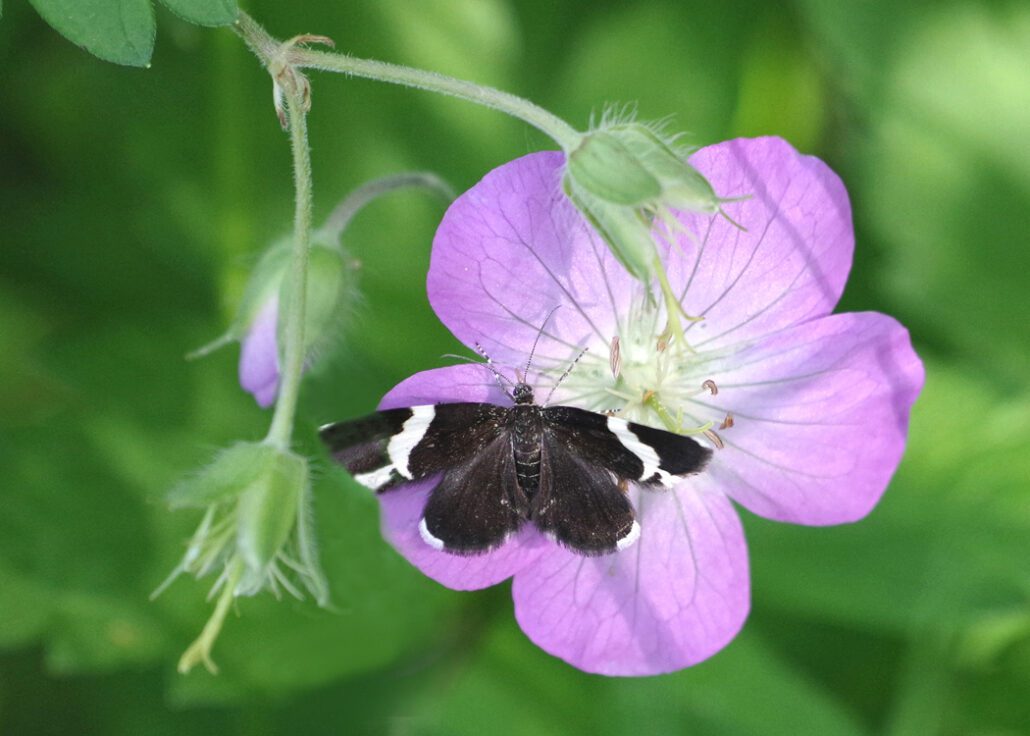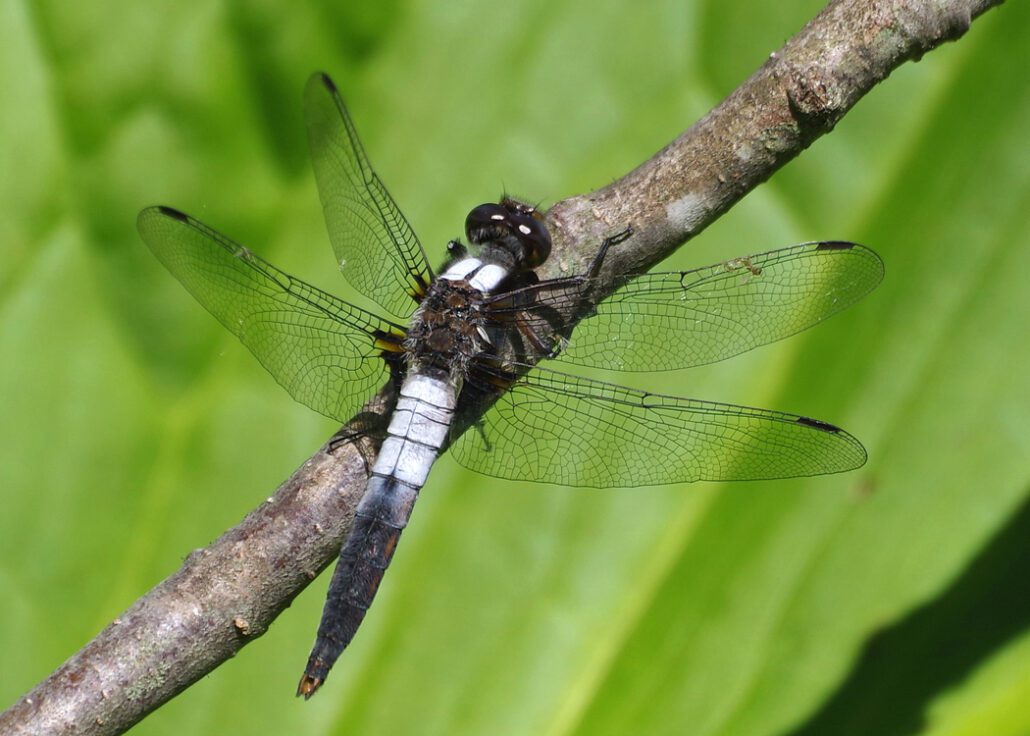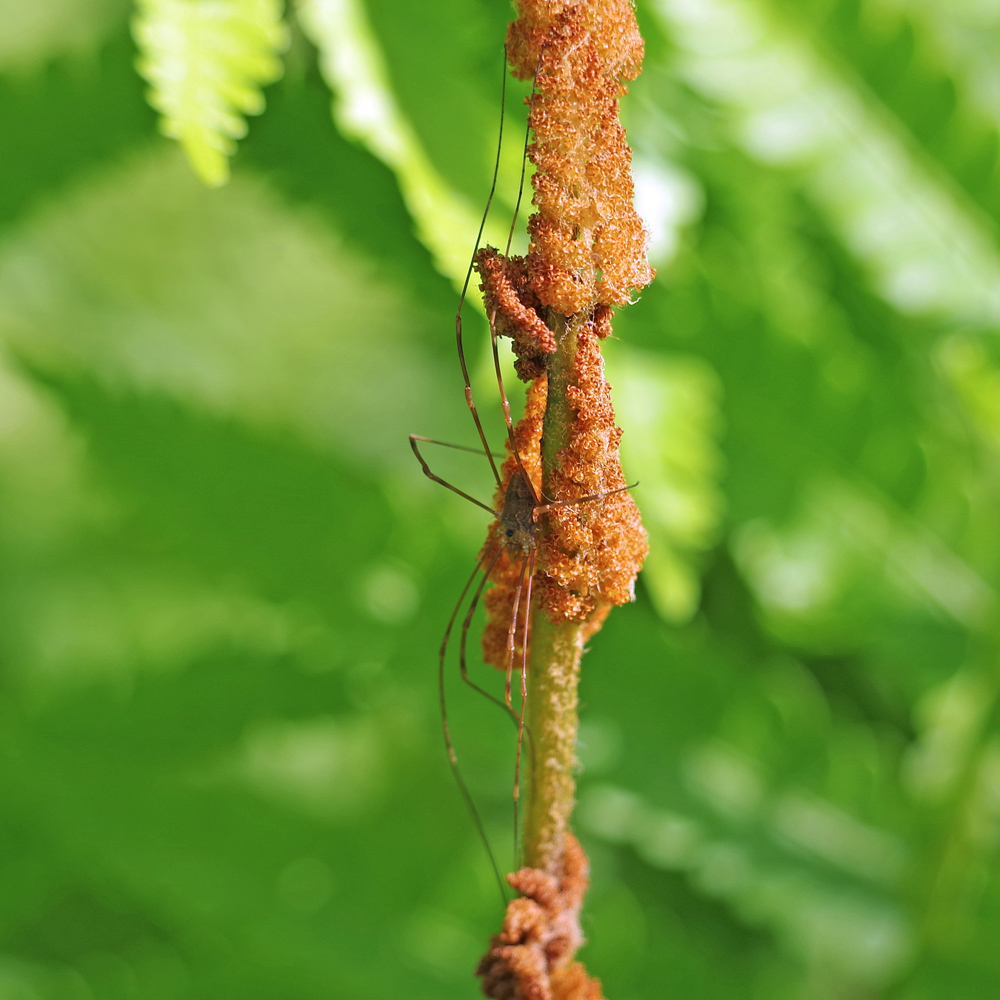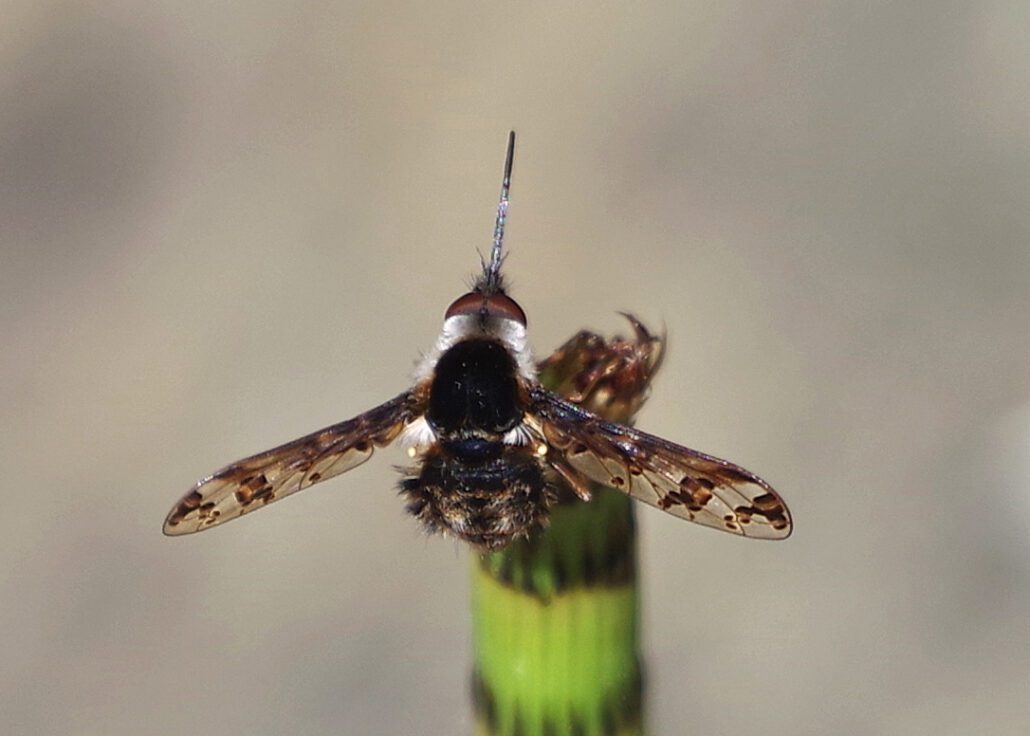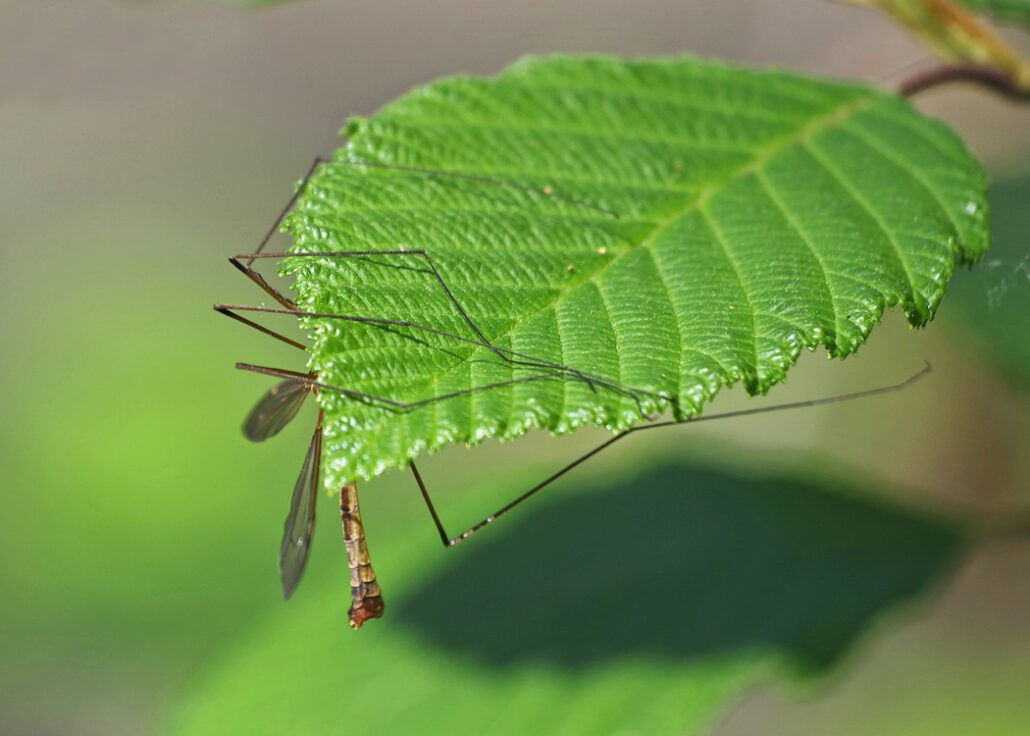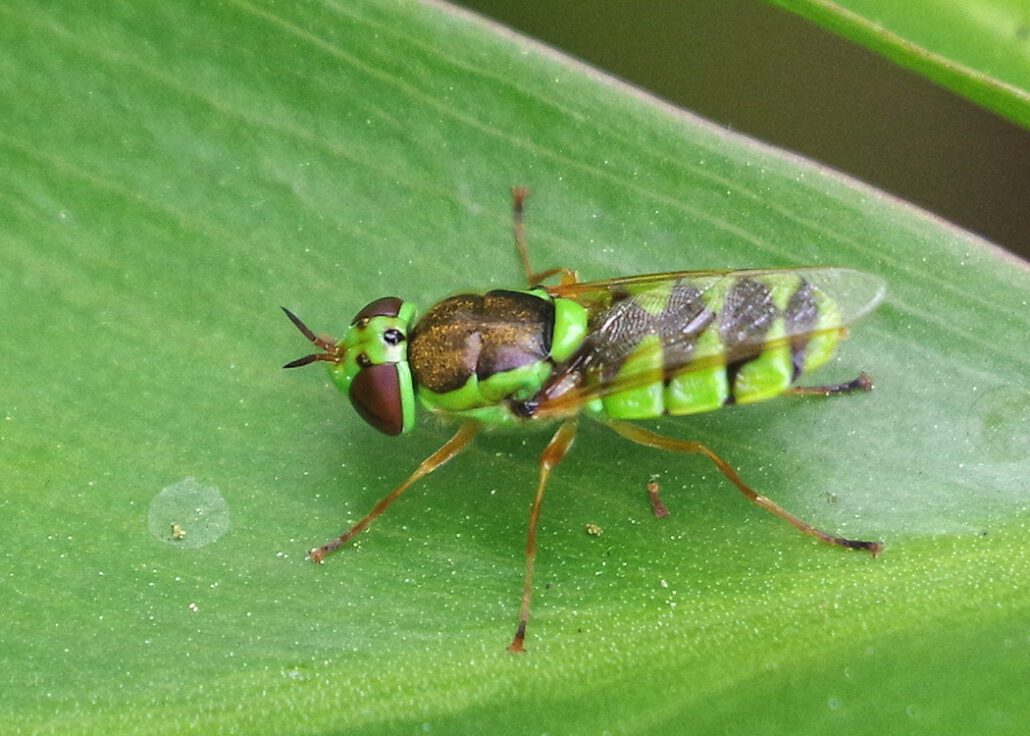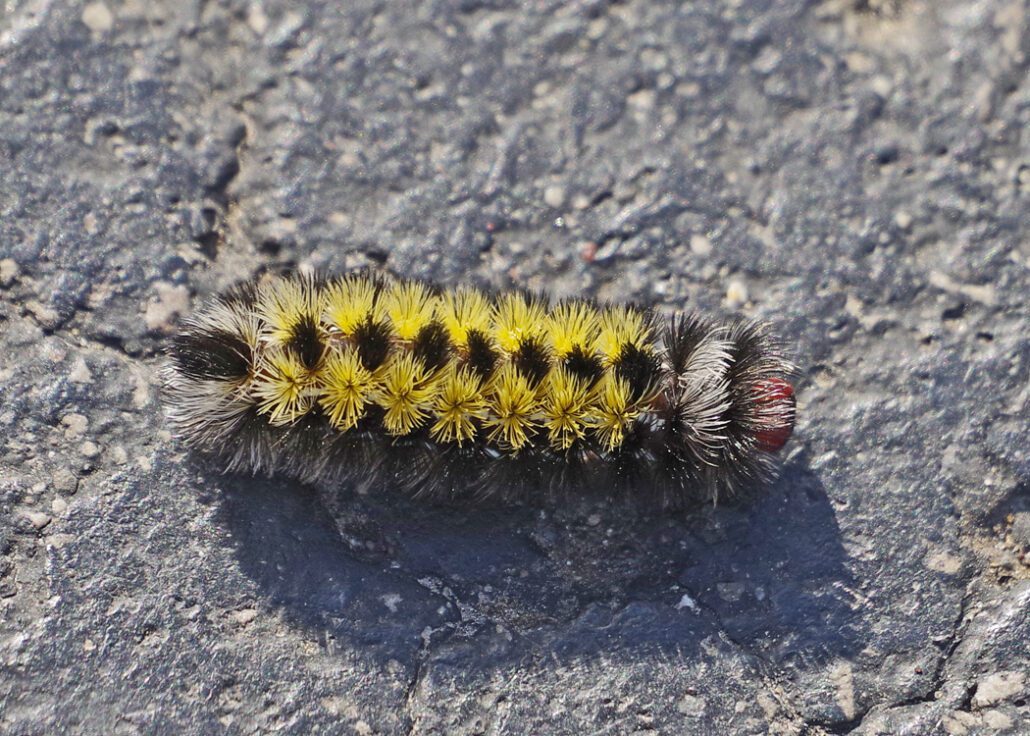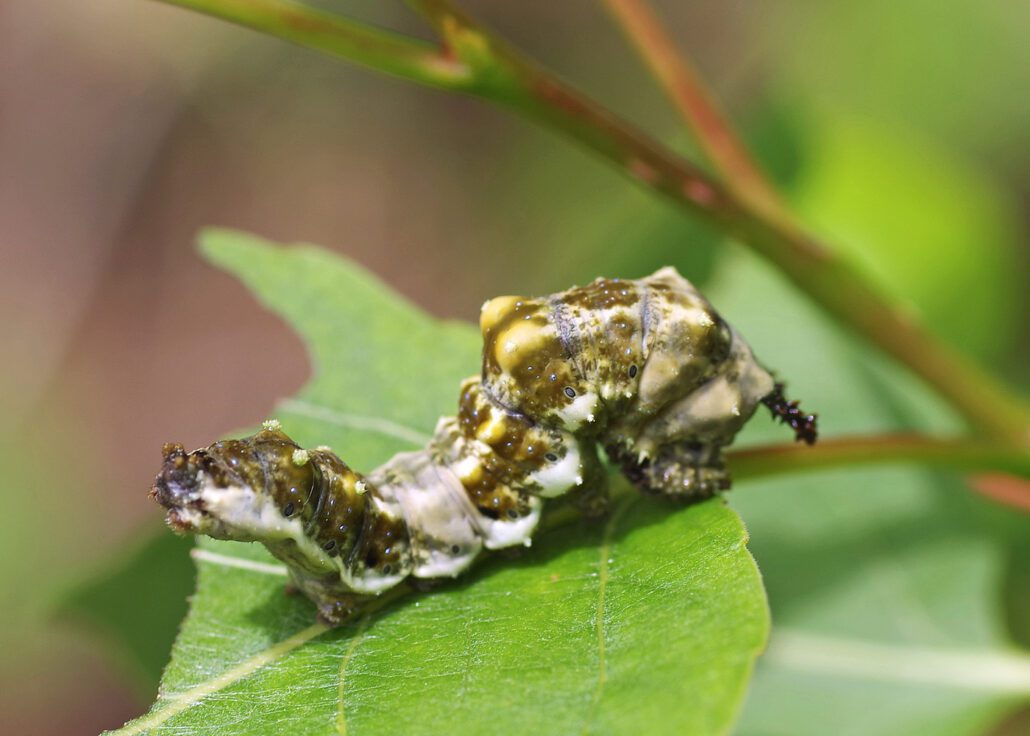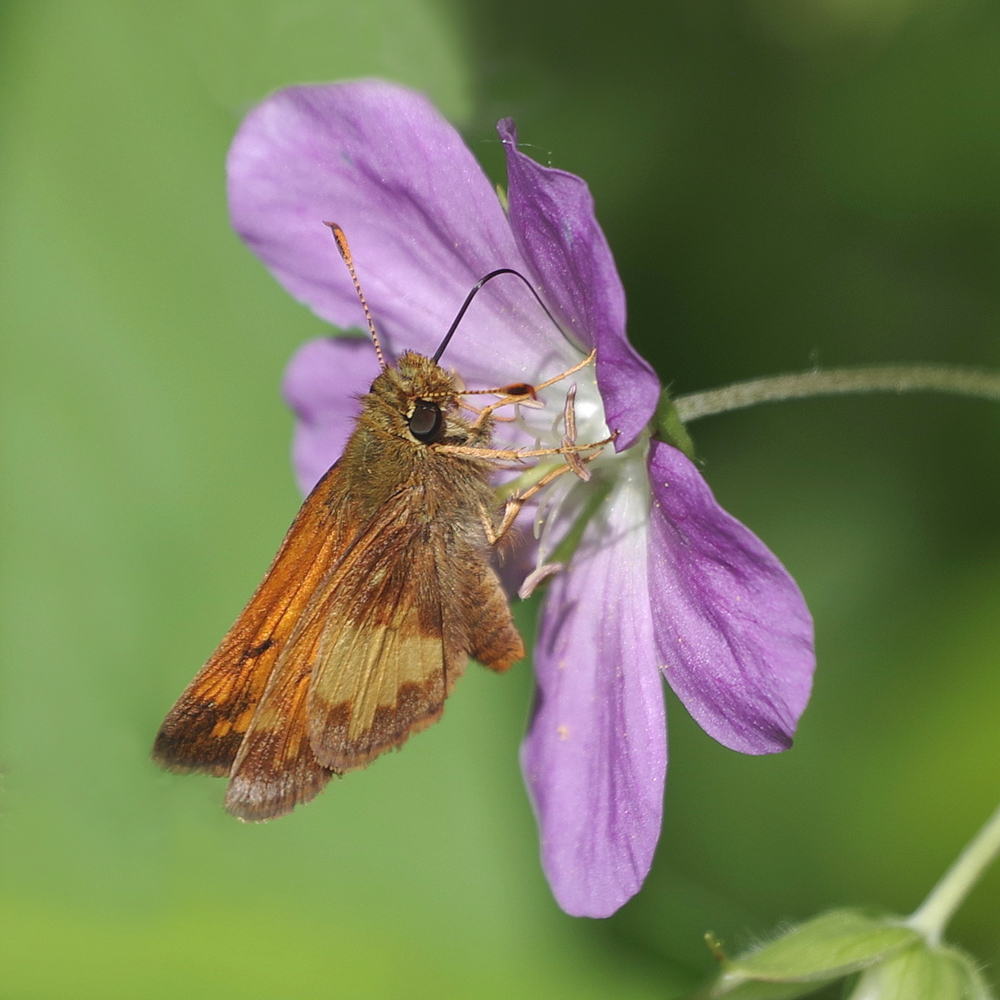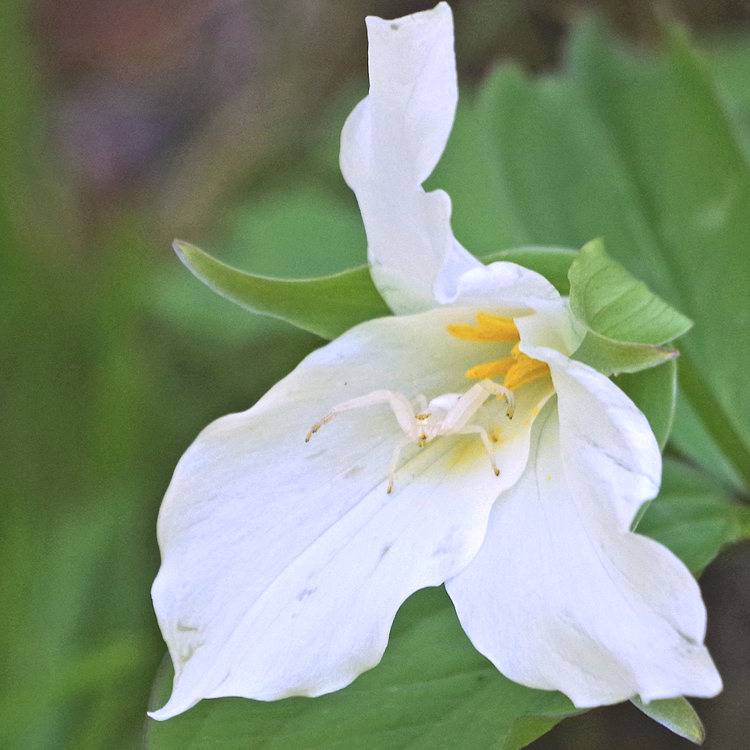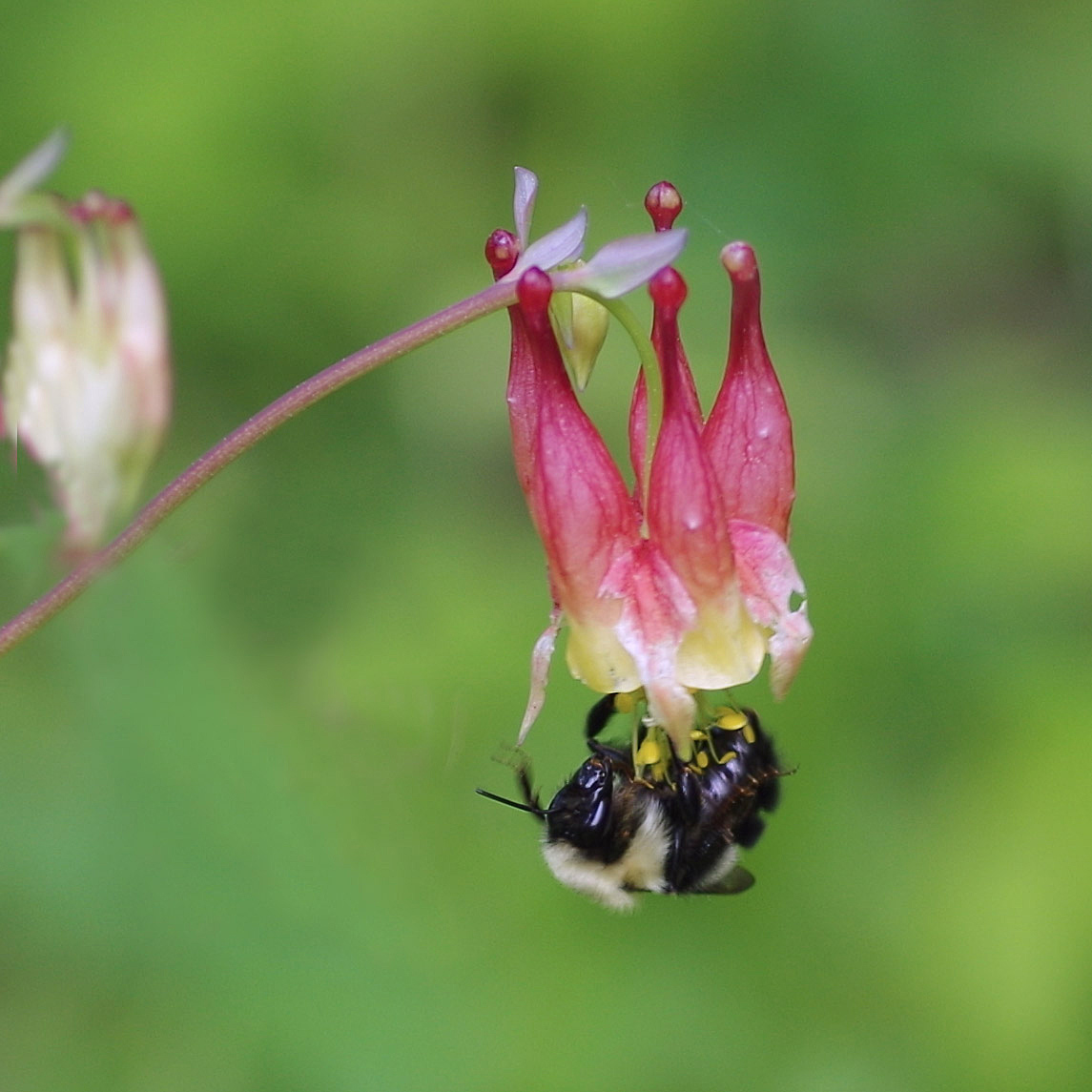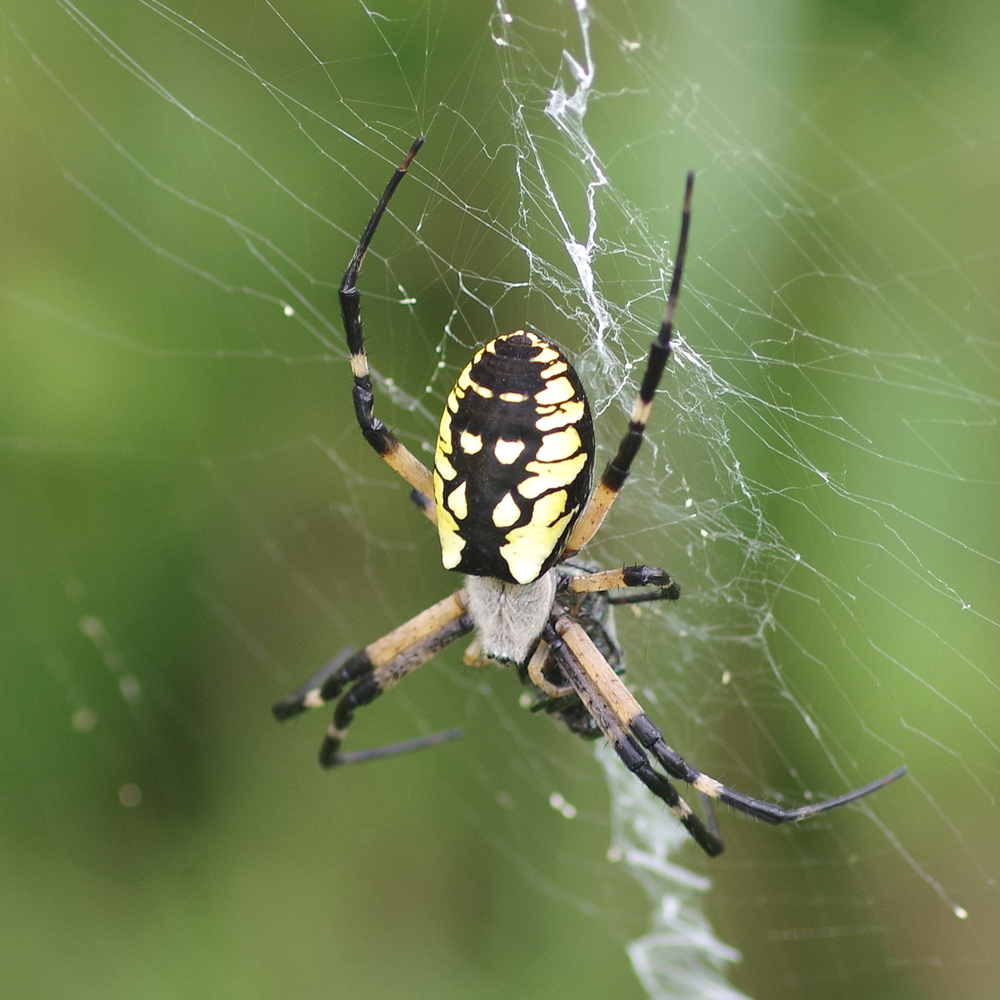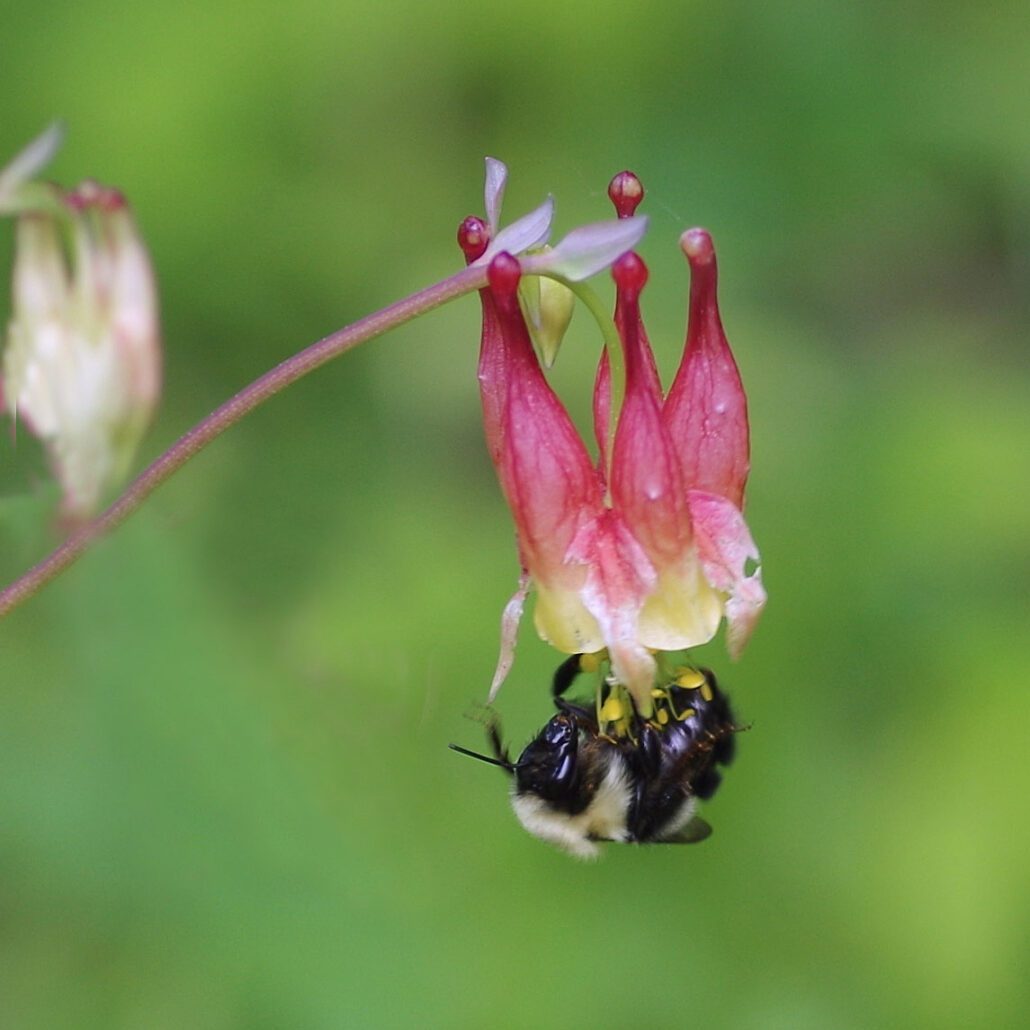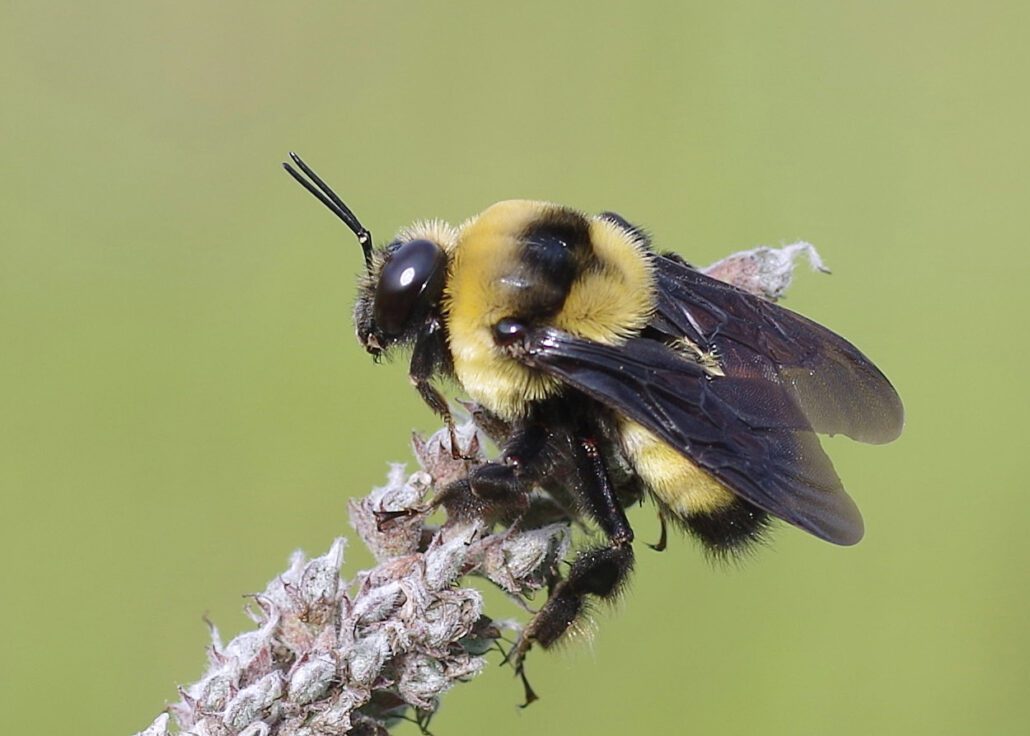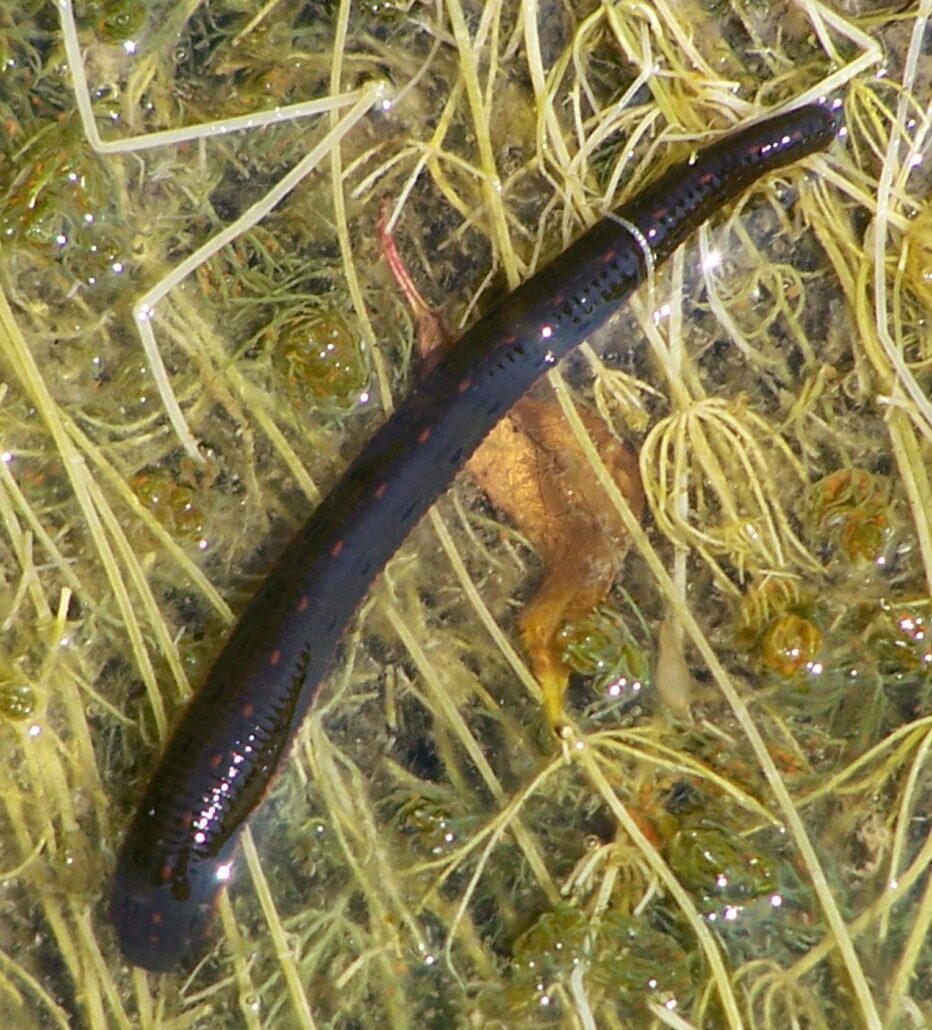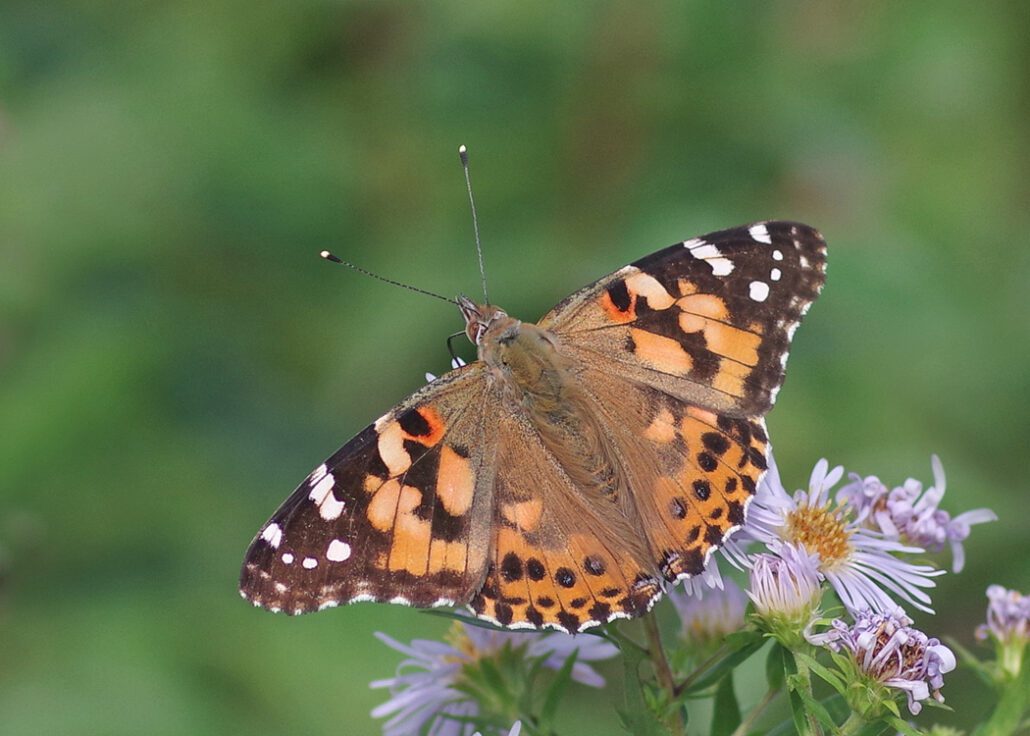
by Kate Redmond
Running Crab Spiders
Greetings, BugFans,
Long-time BugFans know that the BugLady is infatuated with the lovely, sedentary Flower Crab spiders (family Thomisidae) that she photographs throughout the summer https://bugguide.net/node/view/5610/bgpage, https://bugguide.net/node/view/2383290/bgimage, https://bugguide.net/node/view/1299520/bgimage, and she recently posted a BOTW about the chunkier Ground crab spiders https://uwm.edu/field-station/bug-of-the-week/ground-crab-spiders/ (also Thomisidae).
Running crab spiders, in a separate family (Philodromidae) have been mentioned briefly throughout the years – here’s their story.
They are “running” by both name and by inclination – they move along smartly, and Philodromidae comes from the Greek “philodromos,” meaning “lover of the race/course.” There are 92 species of spiders in this widespread family in North America, and they’re usually found on the stems and leaves of plants. Philodromuis and Tibellus are common genera.
These are not flashy spiders – most are small (measuring less than ½” long), flat-bodied, and drab. Many (but not all) are crab-shaped like the Thomisids, but in Philodromids, the second pair of legs is noticeably longer than the first. Eye arrangement is an important tool in spider ID – here’s what it looks like to stare two genera of Philodromids in the face https://gnvspiders.wordpress.com/7-philodromidae-running-crab-spiders/.
Philodromids don’t spin trap webs, but they do generate silk to make egg sacs and to form drag lines that catch them if they catapult off of a leaf in pursuit of prey or if they have to bail in order to avoid capture themselves. They are, of course, carnivores that eat any small invertebrate that they can ambush and subdue, including other spiders, and they are small enough to become prey of larger spiders, themselves.
Most sources said that their venom (should they even be able to puncture your skin) might result in some pain and swelling, but is not considered dangerous.
Males encounter females as they wander the landscape. She leaves a trail in the form of a pheromone-laden silk dragline; he catches up with her and romance ensues. She conceals her egg sac and guards it (like the female Philodromus guarding eggs that she had stashed in an empty beech nut shell) until her young hatch toward the end of summer, which markedly enhances the spiderlings chances of survival. The almost-mature spiderlings overwinter sheltered in leaf litter and under tree bark and mature the next year. A bitterly cold winter takes a toll on overwintering Philodromids.
The most common Philodromid genus is PHILODROMUS, flat spiders that look similar to the Thomisid crab spiders. There are 55 species in North America and about 200 more elsewhere. They’re found on vegetation, but also on the ground or on walls. Larry Weber, in Spiders of the North Woods, writes that Philodromus spiders are often found in trees (and sometimes inside the house, high on the wall), and that he has collected immature Philodromus spiders on the snow in early winter.


Philodromus spiders don’t spin a web but they may create a silken shelter.
With their cylindrical abdomens, spiders in the genus TIBELLUS (tib-EL’-us), the Slender crab spiders, are un-crab-like crab spiders. There are seven species in North America and two (or three) in Wisconsin, and some are striped and others are not. Based on the presence on the abdomen of both stripes and of two spots toward the end, the BugLady thinks she’s photographed Tibellus oblongus, the Oblong running spider, which has a patchwork range across North America https://bugguide.net/node/view/143110/data and is also widespread in the northern half of the Old World.




When a male Oblong running spider encounters a female, he taps her rapidly with legs and palps, and if she’s agreeable, she remains motionless. He spins a “bridal veil” that covers her and fixes her to the substrate. When the show is over, he leaves (in a rush) and she releases herself from the veil.
Today’s Science Word – the Oblong running spider is referred to as an “epigeal” organism, which means that it’s found on/above the soil surface and does not tunnel, swim, or fly. Oblong running spiders are often seen stretched out on grass leaves – the first two pairs of legs forward, the third pair hanging on, and the fourth pair extended back.
Like other spiders, Philodromids have superpowers, and one is their ability to walk on smooth, vertical surfaces without sliding off. How do they do it? Scopulae (scopulas). Alert BugFans will recall that many bees have clumps of hairs – scopa/scopae – on their legs or abdomens that allow them to collect and carry pollen. Same root word – the Latin “scopa” means “broom,” “twig,” or “brush” but scopula is the diminutive form (mini-brush). Scopulae are dense tufts of hairs that are found below the claws and at their tips on the feet of walking or wandering (non-web-spinning) spiders. The ends of those hairs are further fragmented, forming many, microscopic contact points for the spider’s foot. This creates a natural adhesion that is sometimes enhanced by liquid excreted from adhesive pads (alternately, one source suggested that the scopulae respond to a super-thin layer of water that covers most surfaces).
HEADS-UP! CICADAS ARE COMING!! – https://www.smithsonianmag.com/smart-news/watch-for-cicadas-billions-from-brood-xiv-will-soon-emerge-after-17-years-underground-180986592/?utm_source=smithsoniandaily&utm_medium=email&utm_campaign=editorial&lctg=91269370
Kate Redmond, The BugLady
Bug of the Week archives:
http://uwm.edu/field-station/category/bug-of-the-week/

